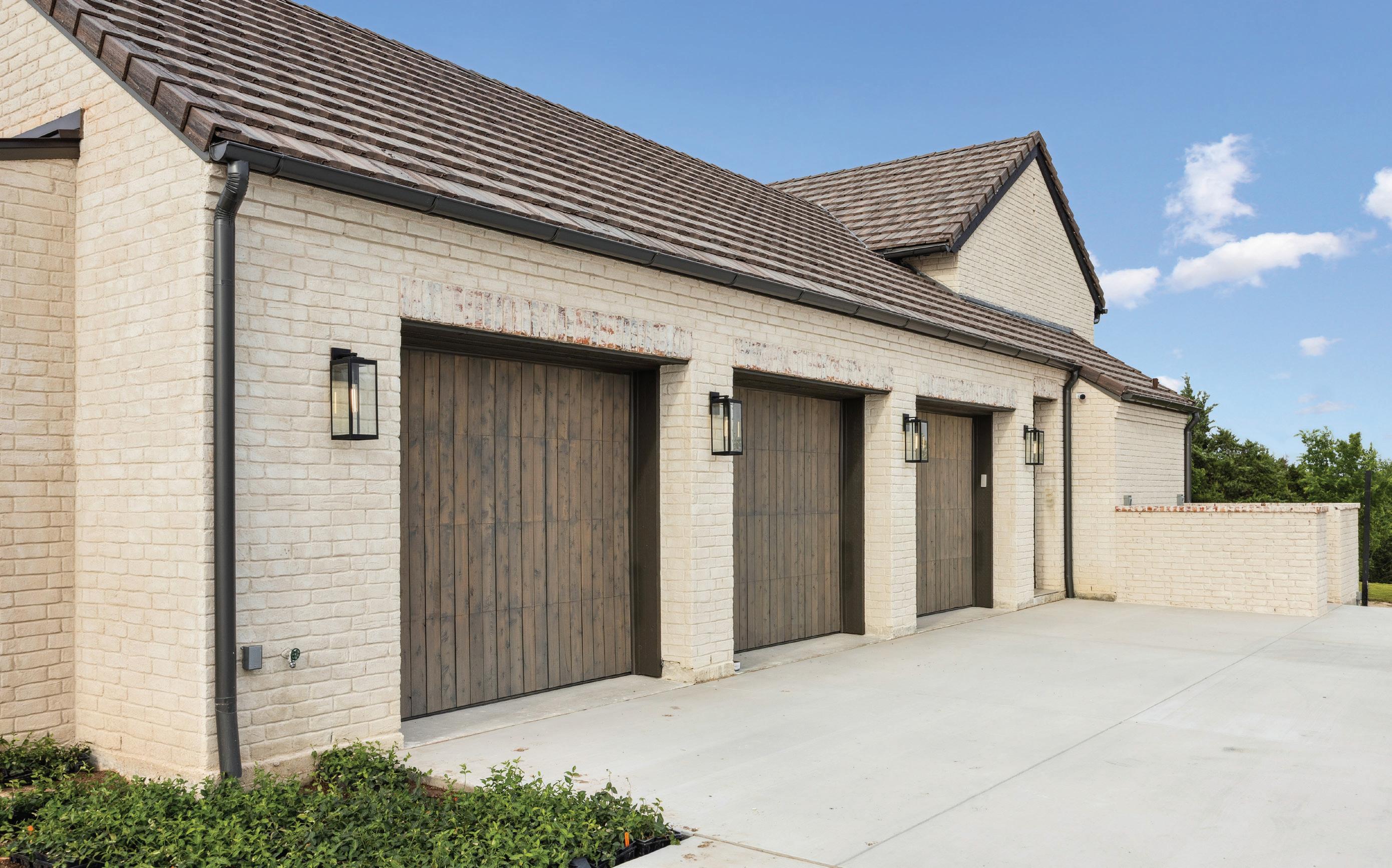














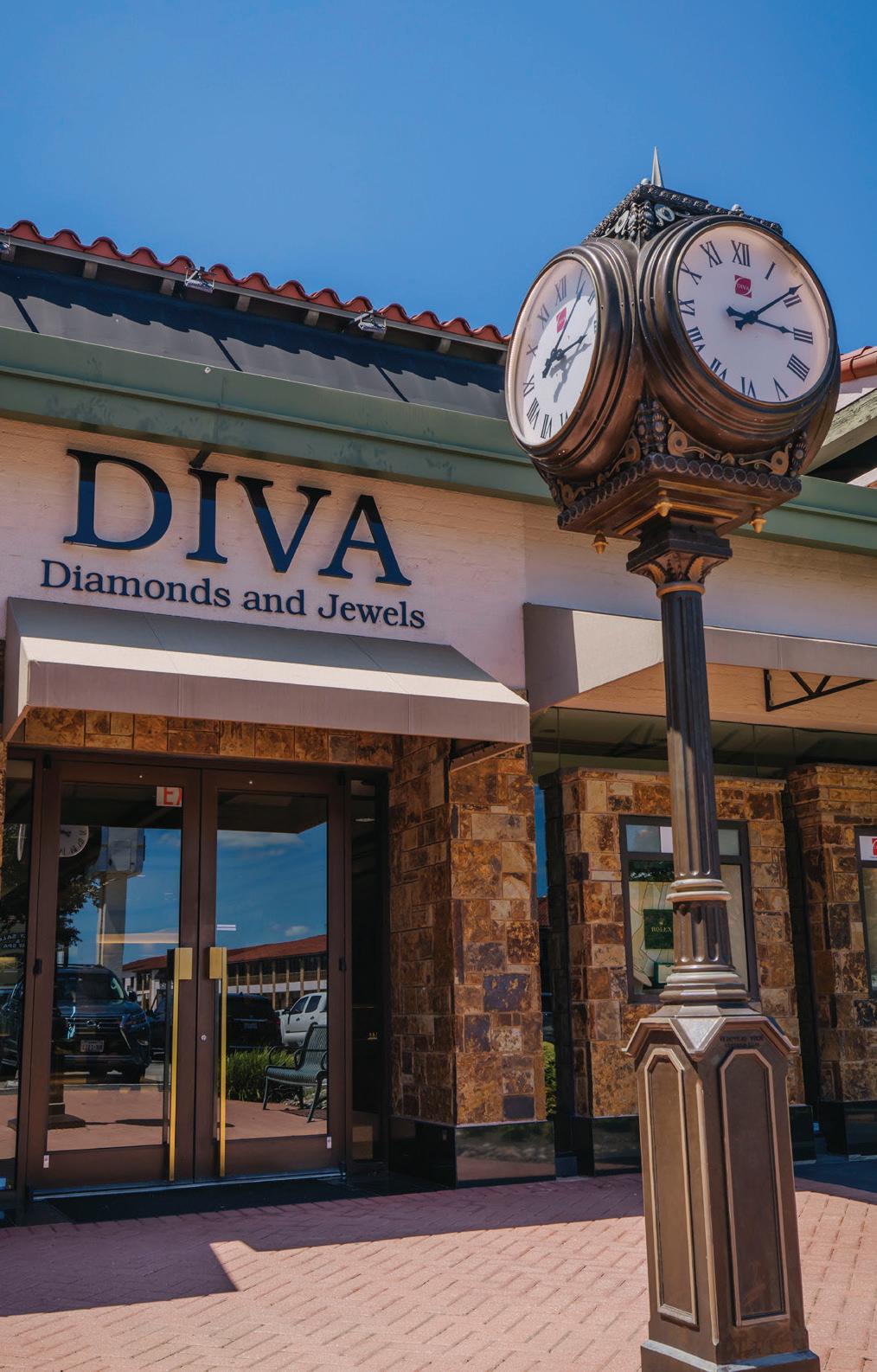



— Laura T., Fort Worth













































— Laura T., Fort Worth


























46 Hold the Mole Burgers, barbecue, and steak? They’re everywhere. But only Texas can claim Tex-Mex. In Fort Worth, the cuisine is as big in the culture as steers. Plate me, andale.
By Malcolm Mayhew
36 Save It, and They Will Come Farrington Field isn’t just a stadium. It’s part of the soul of Fort Worth, a place that connects us all regardless of neighborhood, race, creed, or socioeconomic status. Its future is up in the air. For John Henry, it’s personal.
By John Henry
Every success story starts with a great teacher. These 10 teachers inspire, lead, and shape the future, one student at a time.
By Brian Kendall
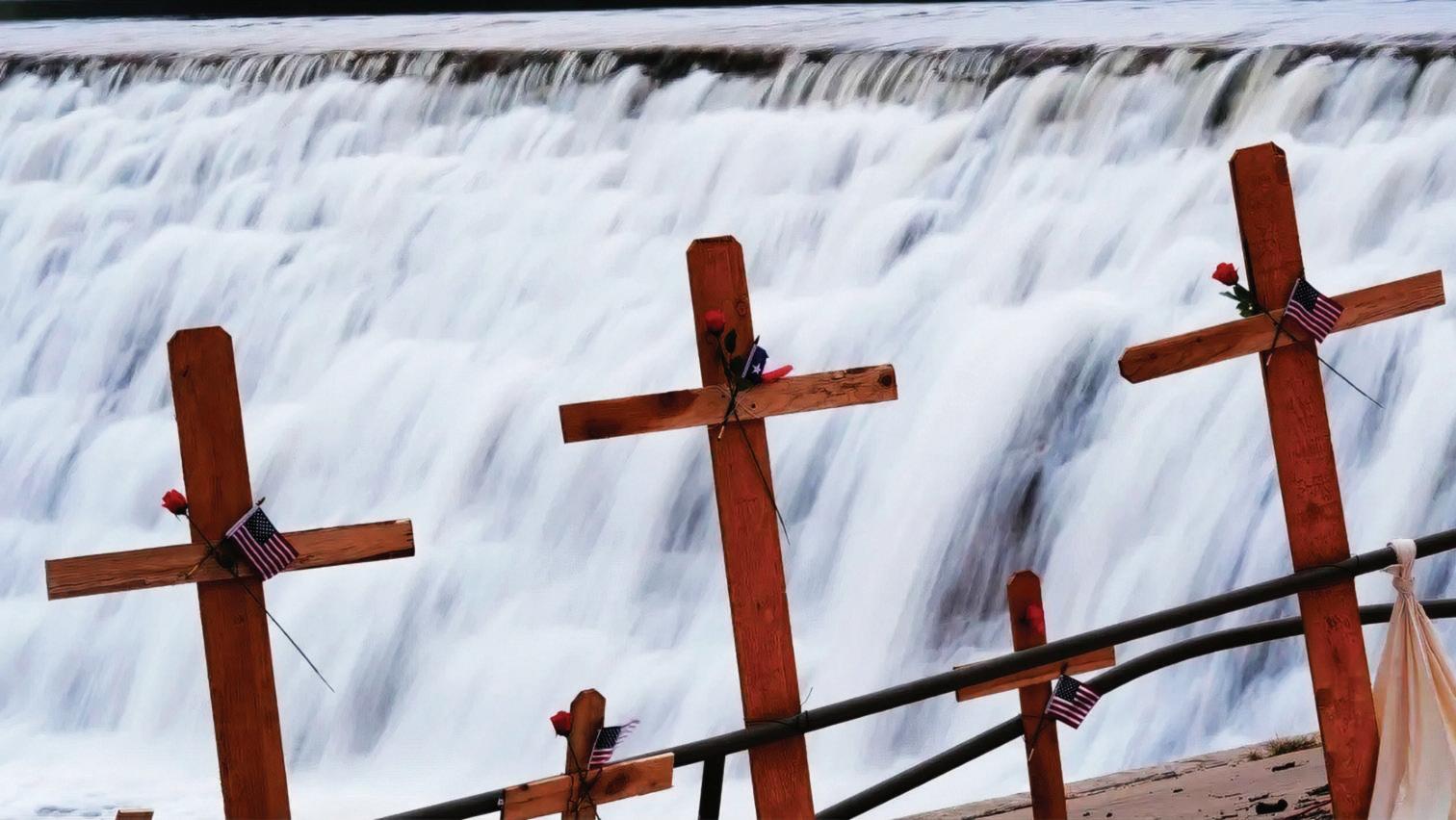
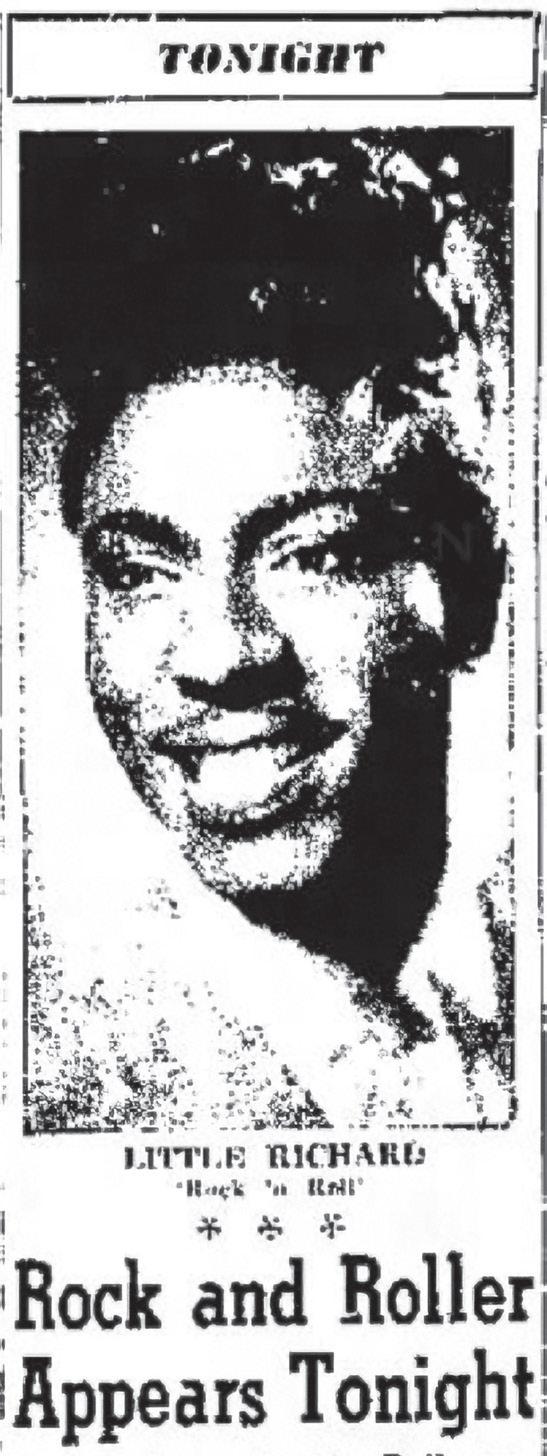

14 City Dweller
Fort Worth citizens rally to the side of devastated Kerr County, pitching in with financial resources, boots on the ground, and prayer.
20 Calendar
Save the dates for “The Book of Mormon” and Pat Green and Randy Rogers at Billy Bob’s.
22 State Lines Brady, Texas: pop. 4,965.
26 Cowhand Culture
Little Richard’s show in Fort Worth in 1956 went off without a hitch, despite a high-profile mishap in Amarillo. A firsthand account.
32 The Reverie
One guy gets a taste of filmmaking in Fort Worth as an extra, err, background artist.
82 Dining
Here’s your table talk: Updates for the everhungry Fort Worth foodie community.









WE COMPOUND:
» Weight Loss Injections
» Ophthalmic Sterile Solutions
» Hormone Replacement Therapies
» Pediatric Medications
» Dermatological Preparations
» ED And Women’s Health Treatments
» Veterinary Medications
The best find of my yearslong pursuit of everything related to Farrington Field is Evan Farrington. He is the grandson of stadium namesake E.S. Farrington, the Fort Worth athletic director and visionary who was the driving force for building the historic facility on the corner of University Drive and Lancaster Avenue.
Evan and his wife, Melaine, have become good friends over the years. I found Evan about 15 years ago on a standard Google search. We discovered we had much in common. Barbecue and beer, margaritas and Tex-Mex, sports, faith tradition, and an appreciation and love for history and heritage — specifically how those things align with the preservation of Farrington Field.
We’ve spent untold hours discussing the possibilities of what could be for this civic treasure.
On a broader spectrum is the discussion about old places. Old places matter not just because they’re old, but because they’re ours. They carry the fingerprints of those who came before us: the dreams of E.S. Farrington, the creativity of the architects and the craftsmen who constructed it, of teachers and coaches. The handiwork of artist Evaline Sellors on the west side façade is her bestknown work.
As important are the relationships forged there both as teammates and competitors.
Earl Campbell and Mike Renfro became close friends as teammates of the NFL’s Houston Oilers, but they first met as combatants at Farrington Field in a high school football playoff game.
Farrington Field is a place where four generations have gathered. Where they made memories. Where they fell in love. Where they won and lost. Where they showed up. Where they grew up.
Nothing can replicate that.
Preservation isn’t nostalgia. It’s stewardship. It’s understanding that cities, like people, have souls. That soul lives in the spaces we inherit, not just the ones we
invent, and the people who came before us.
In that way, Farrington Field, and buildings like it, are our identity. You can’t just simply toss it to the ash heap without significant cultural loss.
The past, present, and future are interconnected.
Fort Worth is a city built on great neighborhoods and rich in historic character — from its pioneer roots and cattle drives to the Stockyards, railroads, oil boom, and aviation legacy. As a matter of public policy, the city recognizes that identifying, preserving, and celebrating these cultural resources is essential to supporting Fort Worth’s economic vitality, cultural identity, educational value, and overall public good, particularly as we surge past one million people.
Naturally, we can’t save them all. As Jerre Tracy, the executive director of Historic Fort Worth Inc., said to me, money is at the heart of all preservation projects. Sometimes it’s simply not there, and difficult decisions have to be made.
But the next time someone tells you a building or stadium is a “dump,” the next logical question is, “How do we fix that? Can we fix it? Is it worth keeping?”
More often than not, the answer is yes. Cities aren’t great because of what they build. They’re great because of what they choose to keep.


John Henry CONTRIBUTING EDITOR
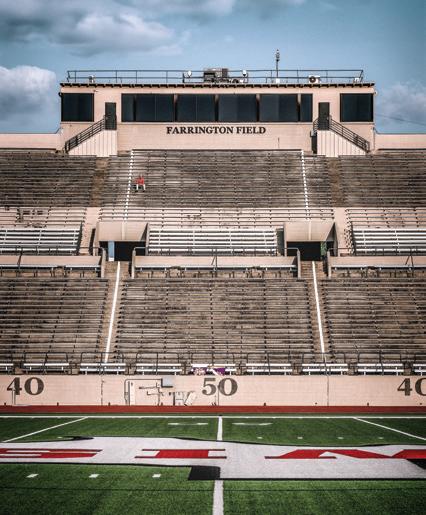
Olaf Growald snapped this shot early in the morning at Farrington Field with Henry, our FortWorth Inc.editor who scribed the cover story, hanging out in the empty stands.
CORRECTIONS? COMMENTS? CONCERNS?
Send to executive editor Brian Kendall at bkendall@fwtexas.com.
NEXT MONTH
Women Who Forward Fort Worth
Cowgirls of the Chisholm Trail
TCU Kickoff Preview
Texas Rattlers


Tell us about a teacher who inspired you or had a positive impact on your life.
My third-grade teacher, Mrs. Cooper. Scatterbrained, cluttered, and incredibly creative, I’ve never related to a teacher more. Can’t tell you what I learned that year beyond gaining a better understanding and confidence in who I am, which is a hell of a thing.
Certainly one would be Dr. Camilo Martinez, a professor of history at Texas Tech, who reminded us of the most important reason we were there: “One day, in the middle of the night, you’ll get a phone call. Your kid is in jail. You happened to sit next to the sheriff in history class 25 years ago.”
I’ve got two shout-outs for my high school English teachers, Mrs. Hilbert and Mrs. Williams. I was a rebellious kid, but they looked past all that and helped me find a passion for writing. And now, here I am.
My business teacher at Abilene High School, Mrs. Billie Gray, taught more than just shorthand and typing — she gave me the tools to support myself through college and inspired me to follow in her footsteps and become a business teacher myself.
owner/publisher hal a. brown
president mike waldum
EDITORIAL
executive editor brian kendall
contributing editor john henry
digital editor stephen montoya
contributing writers malcolm mayhew, michael h. price, shilo urban
copy editor sharon casseday
editorial intern maddy clark
ART
creative director craig sylva
senior art director spray gleaves
contributing ad designer jonathon won
ADVERTISING
advertising account supervisors
gina burns-wigginton x150
marion c. knight x135
account executive tammy denapoli x141 territory manager, fort worth inc. rita hale x133
senior production manager
michelle mcghee x116
MARKETING
director of digital robby kyser director of marketing grace behr events and promotions director victoria albrecht
project manager kaitlyn lisenby events and promotion interns
keely garcia, stella todd
CORPORATE
chief financial officer charles newton
founding publisher mark hulme
CONTACT US
main line 817.560.6111
subscriptions 817.766.5550 fwmagsubscriptions@omeda.com
My high school art teacher was no slouch; he taught me figure proportion and perspective. But the one that started the real creativity bug was my sixth-grade teacher, Mr. Black. He approached every lesson with a twist, using art and storytelling to enhance each assignment — from history to world economics — it made us absorb every lecture.
Recently, a teacher that made a lasting impression on me was Mr. Scotty Miller at Burleson High School. He was my son’s teacher last year for his construction class. My son was going through a rough time, and over the Christmas break, Mr. Miller took time to call and check in on him. Mr. Miller’s class was the only class my son actually enjoyed going to.
One of the most incredible teachers I’ve ever known is my mom; her students called her Ms. K. She taught high school English and was known for her strict grading standards. She would deduct 25 points — or even give a zero — for certain grammatical mistakes on a paper. At the time, I thought it was a bit harsh, but she believed that by setting high expectations, her students would develop strong writing skills and be better prepared for college.

DIGITAL EDITION:
The virtual editions of both current and previous issues are available on our website. Flip through the pages to read more about the great city of Fort Worth by visiting fwtx.com.
©2025 Panther City Media Group, LP. All rights reserved. No part of this publication may be reproduced without written permission from the publisher.
FortWorthMagazine(ISSN 1536-8939) is published monthly by Panther City Media Group, LP, 6777 Camp Bowie Blvd., Suite 130, Fort Worth, TX 76116. Periodicals Postage Paid at Fort Worth, Texas. POSTMASTER: Send change of address notices and undeliverable copies to Panther City Media Group, PO Box 213, Lincolnshire, IL 60069. Volume 28, Number 8, August 2025. Basic
Subscription price: $21.95 per year. Single copy price: $4.99


















817.570.9401


























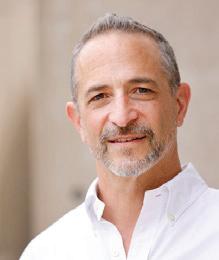

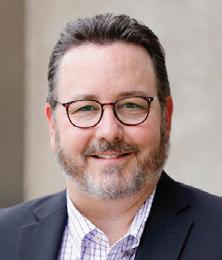

PAT GREEN Fort Worth jumped to the aid of a devastated Kerr County with financial resources and boots on the ground. Pat Green, who lost his brother, sister-in-law, and their family in the tragedy, assembled musicians for a $1 million fundraiser.
WHAT WE’RE WRITING ABOUT THIS MONTH:
On page 20 Things to do in August. On page 22 Brady is the GOAT of world championship barbecue goat cookoffs — we hope you followed that. On page 26 Little Richard played without incident in Fort Worth in 1956, despite a notable dustup on the way while in Amarillo. On page 32 Fort Worth’s burgeoning film industry comes with lots of “extras.”

by Stephen Montoya
It’s been difficult to find the words to illustrate such a tragedy — none seem adequate.
The entirety of Texas — and beyond — has been in a state of shellshock since the early hours of July 4, when hard rain caused the Guadalupe River to rise to never-before-seen levels in Kerr County. The river reached a record-breaking crest in Hunt, rising 26 feet in 45 minutes, and surged through homes, cabins, and campgrounds. Ten million pounds of water flowed every second — 1,000 times faster than normal and comparable to the rush of water one would experience at the drop of Niagara Falls.
Stories from survivors paint a particularly harrowing scene — desperate clinging to large floating objects the only recourse for those who made it
out alive. But many didn’t. And many are still missing.
At press, the death toll has reached 135 — a number we would have collectively described as unfathomable on July 3. Among those who lost their lives include 27 young girls, teenage counselors, and staff of Camp Mystic, an all-girls Christian summer camp. Still photographs of their ravaged lodging — mud-covered purple and pink comforters and stuffed animals strewn about destroyed bunk beds — put a heartbreaking and indelible face to the incomprehensible scale of the tragedy.
Questions as to how and why this happened will linger for some time; the why question will likely never go away.
Very few Texans escaped this event unscathed; you likely know someone or know someone who knows some-
one whose life has been forever altered since July 4. Grief-stricken Texas country legend and Fort Worth local Pat Green lost his younger brother John, John’s wife Julia, and their two sons — Green’s nephews.
Fort Worth, whether through donations, creative ideas, or boots on the ground, has stepped up to lend a helping hand.
In fact, before the floodwaters had even receded, Fort Worth was mobilizing. Seventeen members of the Fort Worth Fire Department — including divers and elite swift-water rescue personnel — were deployed to Kerr County, where they assisted in the search for survivors and recovering the bodies of those who had died.
At the same time, grassroots efforts began to blossom. Corrigan Camp, a girl who had attended Camp Mystic just two weeks earlier, and her brother, Cannon, set up a lemonade and cookie stand in their Fort Worth neighborhood. Their fundraiser benefited both Camp Mystic and a nearby boys’ camp that suffered flood damage, transforming personal grief into support.
“It makes me feel very sad for the people that were at Camp Mystic,” Corrigan told Fox 4 News. “Everyone should help, and they’re being very generous to help us.”
Local restaurants pitched in, too. La Bistro Italian Grill, a family-owned establishment in Hurst, pledged 100% of food and beverage sales that ran from July 7 through 10 to flood relief. The restaurant owner posted on Facebook, “I may not have the power to change what happened, but I do have the power to feed people.”
Chef Jon Bonnell, a stalwart of Fort Worth’s culinary scene, committed 10% of sales from his restaurants (Bonnell’s, Waters, Jon’s Grille, and Buffalo Bros) from July 7 to 11 to vetted relief efforts. And bartender Hannah Rucas donated all tips from a night’s shift at Bush League Bar & Grill, raising $1,300 to aid Hill Country communities.
Fort Worth’s celebrity chef, Tim Love, used his clout to launch “Hats with Heart,” a limited-edition cap

















Designers, Builders, and Home Owners agree, The Jarrell Company is the trusted name in appliances, plumbing, lighting, and decorative hardware solutions. To book your complimentary one-on-one design consultation or to locate a show room near you, scan the QR Code:


fundraiser for flood recovery (available at shoptimlove.com). Proceeds benefit grief counseling through M2G Ventures’ Mental Health Initiative and disaster relief meals provided by José Andrés’ World Central Kitchen. “This isn’t just about money,” Love said. “It’s about showing up. Texas is a big place, but in moments like these, we become one tight-knit community.”
Meanwhile, donation stations accepting canned goods, diapers, pet food, and school supplies were established throughout the Stockyards, including Hotel Drover, H3 Ranch, and 97 West Kitchen & Bar.
Not turning a blind eye to our furry friends, Humane Society of North Texas has played a vital role in animal rescue efforts. Partnering with Wings of Rescue, a national nonprofit specializing in emergency animal airlifts, HSNT has assisted in the evacuation over 200 dogs and cats from shelters overwhelmed by the flood, freeing up critical space at shelters in affected counties. HSNT then coordinated medical treatment and adoption placements for many of the evacuated pets across North Texas.
Fort Worth country musician Josh Weathers raised nearly $500,000 to aid flood victims after an impulsive four-hour livestream, where he played a slew of Texas country favorites, and silent auction that featured brisket, guided hunts, and weekend getaways.
Transforming his tragic loss of family members into public purpose, Pat Green hosted a benefit concert from Globe Life Field on July 16, which featured fellow country stars Miranda Lambert, Dierks Bentley, Jon Pardi, Casey Donahew, and Joe Nichols. The event — streamed free on YouTube and Givebutter — raised over $1 million for families affected by the disaster.
As part of that effort, Fort Worthbased EECU Community Foundation presented a gift of $50,000 to The Pat Green Foundation.
“This is the only way I know how to help,” Green said. “We all look after each other in this big place.”
Frank Kent Motor Co., one of Texas’ longest-standing family-owned automotive dealerships with nearly a century of history, is being sold, marking the end of an era for a family that has been synonymous with Fort Worth’s automotive industry for generations.
The company founded by Frank Kent in 1935 has reached an agreement to sell its dealerships — Frank Kent Cadillac Fort Worth and Frank Kent Cadillac Arlington — to Autobahn Fort Worth, Frank Kent co-owner Will Churchill confirmed in July.
The deal is contingent on manufacturer approval, but pending that, the transaction is expected to close in October, Churchill said.
Autobahn will keep the brand name, something critical to Churchill and his sister Corrie, who have co-owned the dealership since the death of their mother, Wendy Kent Churchill, in 2005. Staff is not expected to change, Churchill said.
“Their culture aligns with ours. They’re in a growth stage. They’re Fort Worth,” said Churchill, the great-grandson of the founder. “It gives all of our young people an opportunity to grow. It gives us an opportunity to ensure the Frank Kent brand will be around for a 100th anniversary.”
Autobahn Fort Worth, a 45-yearold luxury car dealership owned by Fort Worth investor Robert Bass, is preparing to relocate. The dealership currently operates from 3000 White Settlement Road, where it sells and services premium brands like BMW, Porsche, Land Rover, Volvo, Volkswagen, and Mini.
Facing space constraints and looming redevelopment plans in the area, the company has secured a new home on a nearly 75-acre site
off Oakmont Boulevard in southwest Fort Worth, near Chisholm Trail Parkway. The new dealership campus, on land owned by Clearfork developer Cassco, is scheduled to break ground this summer and open by December 2026.
The Frank Kent dealerships will remain at their current sites, Churchill said.
“Really, it’s almost just pulling Corrie and me out and inserting Autobahn,” Churchill said.
The Frank Kent legacy is deeply rooted in Fort Worth. You can’t talk about Fort Worth’s automotive history without mentioning the name.
Frank D. Kent came to Fort Worth in 1927 as a used-car salesman. In 1930, he became a junior partner in the Webb-Kent Buick franchises after purchasing Earl North’s interest in Webb North Buick. Five years later, in 1935, he launched his own venture — the Frank Kent Motor Company — representing Ford and Lincoln Mercury.
In 1939, Kent relocated his growing dealership from West 7th Street to a prominent new facility at Main and Lancaster, a bustling intersection in the heart of downtown Fort Worth. Then in 1953, he made a bold pivot: Kent secured the prestigious Cadillac franchise and relinquished the Ford line, aligning his brand with the pinnacle of American automotive luxury in a move that would define the dealership’s identity for generations.
As chairman, Kent, along with then-President John Luddington, relocated the dealership to the Benbrook Traffic Circle
At the time of his death in 1987, his granddaughter, Wendy Kent Churchill, estimated that he had sold 31,000 Cadillacs in the 34 years.








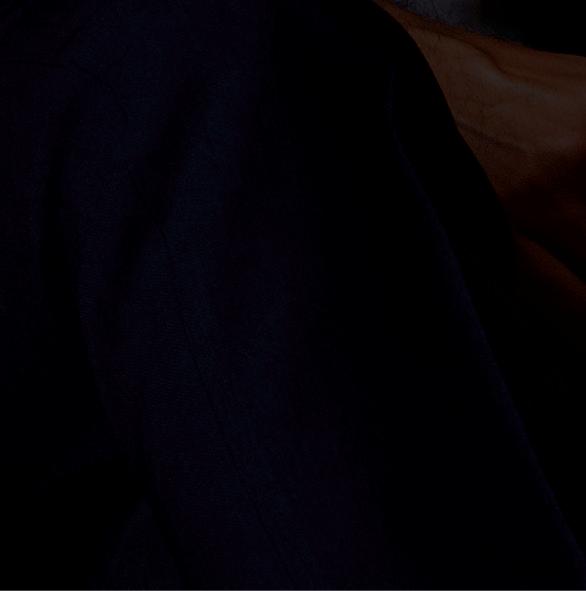

by John Henry

Business leaders, public servants, longtime friends, and four generations of family gathered in First United Methodist Church in downtown Fort Worth last month to bid farewell to Jon Brumley, the pioneering entrepreneurial giant and civic leader whose influence shaped Texas business, education, and community life for more than half a century. Brumley died July 3. He was 86.
In a eulogy delivered by close friend Billy Rosenthal, Brumley was remembered for the quality he considered most essential: attitude. Rosenthal read a favorite reflection Brumley often passed out to colleagues and friends, a piece by Charles Swindoll that emphasized that life is 10% what happens to us and 90% how we respond.
We cannot change our past. We cannot change the fact that people will act in a certain way. We cannot change the inevitable. The only thing we can do is play the one string we have, and that is our attitude. Brumley, Rosenthal said, believed attitude could make or break a company, a church, or a home.
“Just remember Jon,” Rosenthal said. “He led with his heart. He loved every morning, and he always wanted more and better for each of us — whether it
was family, business, or community.”
Brumley’s professional legacy left a deep, lasting imprint on the oil and gas industry. He helped launch and lead a series of successful companies, including Cross Timbers Oil Company — later XTO Energy — with Steve Palko and Bob Simpson, and Encore Acquisition Company, which he co-founded with his son Jonny. The two were named Forbes Entrepreneurs of the Year in 2005.
Brumley set a record for public listings by any individual on the New York Stock Exchange.
But Brumley’s influence went far beyond business. In the early 1980s, he was tapped to chair a citizen commission to address the failures of school desegregation and busing in Fort Worth. He approached the task, family, friends, and stakeholders said, not with ideology but with humility, riding buses with concerned parents and ultimately delivering a set of reforms that won praise from across the political and racial spectrum. A federal judge called it the finest citizen commission ever brought before his court.
Later, as chairman of the Texas State Board of Education — appointed by Texas Gov. Mark White — Brumley implemented statewide academic reforms, including the controversial but lasting “no pass, no play” rule. It was in that role he met Rebecca Dawson Canning, the board’s vice chair and, later, his wife. They married after their terms ended.
Together, the Brumleys built Red Oak Ranch in East Texas, a place of family reunions, wildflower picnics, and campstyle weekends for grandkids. They also established the Red Oak Foundation, which has given away nearly 900,000 books to support early childhood literacy in Fort Worth.
Born in Pampa in 1939, Ira Jon Brumley was the youngest of three sons born to Raymond and Florence Brumley. He graduated from the University of Texas and later earned an MBA from the Wharton School.
Jon Brumley, a great life of Fort Worth.
A smattering of things you might’ve missed
1. Fort Worth Police’s Next Big Cheese: The City Manager’s office tells us the finalists for the city’s police chief are Interim Chief Robert Alldredge; former Dallas Chief Eddie Garcia; Vernon Hale, assistant chief of Prince George County in Maryland; and Emada Tingirides, deputy chief in Los Angeles. Garcia appears to be the leader in the clubhouse.
2. No … Kidding, Sherlock: Texas Gov. Greg Abbott signs a resolution declaring Fort Worth the Aviation and Defense Capital of Texas. Texas already knew that but carry on.
3. AllianceHollywood: Taylor Sheridan’s Bosque Ranch Productions secures roughly 450,000 square feet inside Hillwood’s 27,000-acre AllianceTexas masterplanned community — for what else? Visual storytelling, of course.
4. Name Dropping: The University of North Texas Health Science Center at Fort Worth is now UNT Health Fort Worth, a rebrand that emphasizes its Fort Worth roots and its growing role as a hub for health care education, research, and community service.
5. Fort Worth — The Big Apple: MP Materials will supply Apple with rare earth magnets manufactured at its Fort Worth facility as part of a $500 million deal. The magnets will be produced using 100% recycled materials, making Fort Worth a central player in the development of a sustainable, domestic supply chain for critical components used in smartphones, computers, wearables, and other electronics.
6. United in Compassion: The United Way of Tarrant County, along with Near Southside Inc., and other partners raises more than $100,000 for the more than 800 residents displaced by a fire at The Cooper apartment complex.
7. What Are They Smoking?
Something called “Lawnstarter” recently published its rankings of America’s best barbecue cities. Fort Worth came in at No. 79. Bold choice for a list pretending to know barbecue. Tell us you know nothing about barbecue without telling us.
8. Hopping to Class: TCU has a parking problem. The campus rookies — that is, freshmen — might not be “allowed to bring a car to campus” in the fall. The issue: The school is in the midst of building a new residence hall and parking garage. There’s no room. Entrepreneurs are busy making spaces.















by Maddy Clark
‘The Lightning Thief: The Percy Jackson Musical’
Based on Rick Riordan’s bestselling teen novel, this performance features an original score that follows the story of a young demigod as he learns to navigate unforeseen challenges and attempts to prevent war with the gods before it’s too late.
Casa Mañana casamanana.org
8-10
‘The Book of Mormon’
Winner of nine Tonys and proclaimed “the best musical of the century” by The New York Times, “The Book of Mormon” follows the journey of two Latterday Saints missionaries as they spread the “Good Word” far from any comforts of home.
Bass Performance Hall basshall.com
14-Sept. 6
‘The Last Five Years’
With Nick Jonas playing the lead earlier this year, this 20-year-old musical about the end of a relationship finally received its Broadway debut. More importantly, the heartbreaking musical will get its Cowtown debut in August with the players at Circle Theatre.
Circle Theatre circletheatre.com
15
Randy Rogers and Pat Green
Six weeks after the devastating Texas floods, Lone Star State country legends Randy Rogers and Pat Green — who lost four family members in the disaster — play the World’s Largest Honky Tonk for a special, one-time only acoustic performance.
Billy Bob’s Texas billybobstexas.com

16-Nov. 2
David-Jeremiah: The Fire This Time
Spotlighting the Dallasbased conceptual artist, David-Jeremiah, this carefully curated installation features 28 works crafted on wood that tower over 10 feet and encircle the viewer.
The Modern themodern.org
23
Stars of the Symphony

28
Shinedown w/BUSH
Multiplatinum band Shinedown and “Glycerine”-crooning BUSH swing by Dickies Arena for the penultimate performance of their 24-date summer tour. Special guest Morgan Wade, who recently notched a hit with “Wilder Days,” will open the proceedings.
Dickies Arena dickiesarena.com


Aug. 16
Though best known for her Grammy Award-winning “Redneck Woman,” released over 20 years ago, Gretchen Wilson has stayed busy with six releases and numerous collaborations over the ensuing two decades.
Billy Bob’s Texas | billybobstexas.com
Showcasing the aweinspiring talent of the Fort Worth Symphony Orchestra, “Stars of the Symphony” is a series of repertoire pieces spotlighting individual members of the city’s orchestra.
Bass Performance Hall basshall.com
A Solitary Man: The Music of Neil Diamond
One of the most prolific and successful singersongwriters of the ’60s and ’70s, the stars of Reid Cabaret Theater will have the arduous task of fitting all of Neil Diamond’s hits in a brisk 90-minute set. Reid Cabaret Theater at Casa Mañana casamanana.org
28-31
The USA Weightlifting North American Open Series
Following a successful competition in 2024, USA Weightlifting’s Open Series returns to the Fort Worth Convention Center, where over 1,200 athletes will lift very heavy things for a chance to earn a spot at the North American Open Finals in December. Fort Worth Convention Center usaweightlifting.org




S i n c e 1 9 5 2 , F o r t W o r t h B i l l i a r d s h a s b e e n t h e g


LEARN MORE
r e m i u m g a m e r o o m e s s e n t i a l s . F r o m p o o l t a b l e s & c u e s t o s h u f f l e b o a r d , f o o s b a l l , a i r h o c k e y , d a r t s , a n d a r c a d e
s p a c e W e a l s o o f f e r e x p e r t s e r v i c e s , i n - h o u s e c u e r e p a i r , a n d e x c l u s i v e d i s c o u n t s f o r i n t e r i o r d e s i g n e r s .
V i s i t u s t o d a y a n d d i s c o v e r w h y w e ’ v e b e e n a t r u s t e d n a m e
i n N o r t h T e x a s g a m e r o o m s f o r o v e r 7 0 y e a r s .
V i s i t O u r S h o w r o o m
3 9 7 0 W V i c k e r y B l v d
F o r t W o r t h , T X 7 6 1 0 7
8 1 7 - 3 7 7 - 1 0 0 4
s a l e s @ f o r t w o r t h b i l l i a r d s c o m
f t w o r t h b i l l i a r d s


f w b i l l i a r d s

by Shilo Urban
Population: 4,965
Every Labor Day weekend, more than 200 teams from across America and beyond gather in Brady to try for the prize at the World Championship BBQ Goat Cookoff. Thousands of fans flood the rural hamlet, which is easy to find: It’s smack in the geographical heart of Texas, on the northwestern edge of the Hill Country. Barbecue smokers line the banks of Brady Creek as kids cavort in bounce houses and
craftspeople sell their wares. The festival has been around since 1974, and these days over 5,000 pounds of goat are smoked, sauced, and served each year.
Before Brady became known for goats, cattle ruled the scene. After frontier settlement impeded the easterly Chisholm Trail, the Western Trail opened in 1874 and rumbled right through Brady. The cattle drives
roughly followed today’s Highway 283, which runs north from the city. Brady’s ranches, railroads, and cotton fields tell a familiar story of small-town Texas — until World War II prompted the construction of Curtis Field airport three miles away. A primary flight school for the U.S. Army Air Forces, it’s estimated that 10,000 pilots trained at the facility during the war. They practiced in the skies above their enemies: Just a few miles away was Camp Brady, a prisoner-of-war camp with over a thousand German inmates. Most were from Gen. Rommel’s Afrika Korps, and many were SS or Gestapo. The POW camp is long gone, but you can see the guard shack at Brady’s Heart of Texas Historical Museum, along with Curtis Field’s 1940s wooden control tower.
If you’re interested in World War II history, be sure to visit the courthouse square and see the 8-foot statue of hometown hero James Earl Rudder. Rudder commanded one of D-Day’s most heroic feats during the invasion of Normandy, the perilous Pointe du Hoc assault. The 33-yearold and his Army Rangers stormed the beach and then used ropes and ladders to scale the Pointe, a sheer 110-foot cliff, to seize the German artillery battery on top. Despite constant enemy fire, multiple counterattacks, and a devastating 50% casualty rate — the Americans cap -







tured the position. After the war, Rudder returned home to Brady and served as mayor before becoming the president of Texas A&M University in 1959. His statue stands ready in combat uniform, and a bottle hidden inside holds sand from Normandy Beach.
Brady is no longer filled with soldiers but with the sounds of traditional country music, and it’s largely thanks to one man: Tracy Wilcox. The longtime radio DJ runs the local record label, booking company, and Heart of Texas Country Music Museum. You can’t miss the museum; Jim Reeves’ blue-and-white tour bus is parked out front. Inside the building, you’ll find the best collection of country music memorabilia this side of Nashville, from vintage instruments to rhinestone-studded stage costumes. See artifacts from 100-plus country musicians like Loretta Lynn, Patsy Cline, Ernest Tubb, and Ray Price. Wilcox also masterminds Brady’s two annual country music festivals, including the upcoming Heart of Texas Honky Tonk Fest on August 20 to 23.
Whether you’re two-stepping at a music show or eating your fill of barbecue goat, Brady gives you plenty of reasons to kick up your heels, loosen your belt, and give a friendly nod to this throwback Texas town.



Savor: The first train that ever rolled into Brady came from Fort Worth, and the town’s old Santa Fe depot is now its newest eatery, Big Easy Station. Burgers at the popular watering hole have fun toppings like pepperoni, fried banana peppers, and caramelized onions. Fried catfish is the fan favorite at Boondocks, a local mainstay with housemade ranch and complimentary pinto beans. For breakfast, Mexico City Café makes a mean plate of migas and a wide variety of omelets and burritos. Wine lovers will want to check out Dotson-Cervantes, a vineyard and winery outside of town owned by a former Oakland Raiders lineman and his wife.
Shop: Are you shopping for a taxidermied raccoon, a vintage trench bugle, or a whimsical necklace made of dentures? You’re in luck. D&J’s Good Ole Days Antiques & Oddities isn’t just a shop — it’s an adventure. From half-burnt doll heads to tumbleweed sculptures and crusty Victorian books, this off-the-wall store specializes in the quirky and uncommon. Browse prosthetic eyeballs and skeleton keys or pick up a retro cattle brand for your collection. All the oddball treasures are well organized and thoughtfully curated, and the clever, humorous staging may keep you looking longer than you planned.
Enjoy: Deer season is big news in Brady. Hunters travel from far and wide to try and bag a buck on the large ranches and leases that surround the town. It’s been a hunting hotspot since before the McCulloch County Jail was built in 1910; the three-story, red-brick structure has the foreboding appearance of a medieval castle. Today it houses the Heart of Texas Historical Museum, where you can see the old iron cells, a hangman’s noose, and 500 model airplane engines. If you have time, catch a movie at the Palace Theater, which was built in 1927 and restored in 2017.
Snooze: Bonnie and Clyde hid out at the TruCountry Inn on more than one occasion. Built in 1923,
its themed suites (cowboys and country musicians) feature original windows and carved wooden doors — and in one case, a bullet hole. Country singer Heather Miles restored the landmark building in 2020. For something a bit more modern, try short-term rentals on Airbnb or Vrbo like 4th Street House, a colorful blue bungalow with a backyard fire pit and hot tub. The Gates Guest House nearby is a freshly renovated 1950s cottage with a sparkling white kitchen, and the Heart of Texas House has a fenced-in yard for your pooch.
How to Get There: For the shortest and easiest route, drive south from Fort Worth on US-377, which leads all the way to Brady. You’ll pass through Granbury, Stephenville, and Comanche along the way. The entire trip is about 190 miles and takes just over three hours.


by Michael H. Price

How Little Richard’s Amarillo bust nearly flummoxed his Fort Worth début
Little Richard Penniman, the piano-pounding blues-belter from Georgia, was riding high on the rock ’n’ roll charts — “Tutti Frutti,” “Long, Tall Sally,” those radical reinventions of the conventionally accepted idea of a pop-tune hit — when Fort Worth beckoned with a booking at the Will Rogers Memorial Auditorium.
Richard’s barnstorming tour of July-August 1956 ranged from New Orleans’ Labor Union Hall to the Soldiers & Sailors Memorial Auditorium in Chattanooga, Tennessee. Nor did Little
Richard’s anchoring label, Los Angeles-based Specialty Records, neglect the provinces: Amarillo and Lubbock provided concert stops en route to Fort Worth.
Amarillo nearly jinxed the deal. Specialty Records’ founder, Art Rupe, prized emotional fervor over formal musicianship. Rupe had given Little Richard the liberty to be his own raw-edged self, challenging a segregated musical marketplace to accept an essentially Black rhythm-andblues style without dilution. Before
“Tutti Frutti” had splashed in 1955, Little Richard was still laboring under archaic typecasting as a “race records” artist at a larger but less adventurous corporate label, RCA Victor.
That transformative recording of “Tutti Frutti,” its erotic essence tempered by a chant of seemingly nonsensical syllables, would thrust Little Richard (1932-2020) into the emerging, cautiously integrated idiom called rock ’n’ roll. The singer-pianist became a kinsman of the agreeably mixed likes of Elvis Presley, Fats Domino, Chuck Berry, and Carl Perkins. The announcement of an Aug. 25 appearance in Fort Worth saw a surge in local retail sales of Little Richard’s records; the show became a standing-room sellout.
The snag occurred on Aug. 23, 1956, at Amarillo. Could have been worse, and almost was. Cooler heads prevailed, however, as a result of some fast thinking (make-nice peacekeeping, that is) by Little Richard and his road manager-chauffeur, Aubrey Prince. The Lubbock and Fort Worth engagements went on as planned — not to give away too much, y’know. The conspicuous arrests had included Richard, Prince, and the instrumental accompanists — a scant eight citizens, but nonetheless a full-band lineup in the small-ensemble music-making economy of the period.
I revisited the scene of that municipal embarrassment a few years ago.
The site of Little Richard’s disturbing-the-peace bust stands now as a ghostly West Side landmark of Old Amarillo called the Nat Ballroom — still sturdy, although its festive atmosphere has long since succumbed to the gloom of a ragtag antiques mall. The site is the San Jacinto neighborhood, an off-downtown enclave that has adapted its once-prosperous mercantile foundations to a tourist-bait vibe, stemming from its ties to a historic pre-Interstate System highway known as Route 66. (Yes, the inspiration of Bobby Troup’s famous song of that title; rhymes with “get your kicks.”)
The Nat’s immense dance floor,



nowadays, seems cramped and mazelike when partitioned into vendors’ booths. The once-ornate, acoustically bright bandstand has been crammed with trinkets and furnishings that resemble nothing so much as thriftstore merchandise with forbidding price tags. In recent times, a halfhearted attempt to decorate the stage with musical instruments, attached to human-scale mannequins in musician-like attire, seemed a feeble wax-museum echo of the Nat’s heyday. The place scarcely resembles its jive-jumping state of the night
when my Uncle Grady L. Wilson and I had watched Little Richard and his band stir a mixed crowd to a frenzy (the happy and benevolent sort) and then get themselves arrested in the process.
Now, my Uncle Grady managed Amarillo’s downtown movie theaters and made a sideline of booking traveling entertainers for the Black-neighborhood nightclubs. Grady was the first picture-show boss within Dallas-based Interstate Theater Circuit to remove the barriers of segregated moviegoing. The Interstate brass cast a cautious gaze at Grady’s policy-busting experiment, given the geographical isolation of Amarillo. But Interstate applied such desegregation companywide when an increase in paid admissions became evident. Grady made no secret of his integrationist politics. He would be the only one among my blood-kin elders to vote the Kennedy ticket for 1960, and he entrusted his dental care to one
Dr. Richard W. Jones, a fellow combat veteran of World War II who also held forth as president of Amarillo’s branch of the NAACP. No pretensions of fashionably liberal superciliousness for this uncle of mine; he merely made the choices that suited his interests, and so there.
On that pivotal date of Aug. 23, 1956, when I was 8 years old, Grady invited me to attend Little Richard’s pivotal show at Amarillo’s Nat Ballroom. The cavernous, balconied dancehall had thrived for decades on customarily white-folks patronage, showcasing since the 1930s-1940s such monumental big-band personalities as Glenn Miller, Bob Wills, and Jimmie Lunceford.
By 1956, the inflated post-WWII economy had deflated the traveling big-band attractions to a procession of small but emphatic combos, ranging from jazz to country-western to the stirrings of rock ’n’ roll. On this occasion, the headliner was Little Richard Penniman, a profoundly Black rock ’n’ roll star, born of amen-corner gospel and barrelhouse R&B. The crowd was salt-and-pepper — anybody could buy tickets — and the promoters had made none of the standard provisions for segregated seating. The adjoining Alamo Bar offered Schlitzes and Lone Stars in chilled cans, along with soft drink setups.
Little Richard’s program, frantic and thrilling, ended prematurely in an impulsive and awkwardly timed police raid that resulted in several arrests on intended charges of miscegenation — a misdemeanor rap, calculated to divide and conquer by sheer dehumanizing force of humiliation — for a number of mixed-color couples on the dance floor. The centerpiece was a public-nuisance bust for Little Richard, who had provided the provocation for such unbridled merriment. My uncle had sensed the raid before it could begin and edged us toward an exit, but not before we had witnessed a measure of the misadventure.
The entertainer’s face, accompanied by a headline reading, “Hepcat Hand-
cuffed,” adorned the next morning’s Daily News. The photograph captured a fleetingly somber expression on the face of the usually ebullient Little Richard, as if conforming to the naturally grim face of a Potter County deputy sheriff named John Brown. Depending upon which edition a subscriber might have received, the photo appeared variously upon Page 1 (the “bulldog” edition, printed around 1 a.m. for the Panhandle-at-large readership), or on an interior page of the “four-star,” or late-morning press run.
Now, the Globe-News Company’s resident publisher, S.B. Whittenburg, exercised a standing policy that no Black individual’s face should appear upon Page 1 of any given day’s editions, unless associated with a provocative or urgent story. But Whittenburg also knew better than to enforce that rule when its exception might help to sell a few thousand additional copies. As my father ranted over breakfast about the disgrace thus visited upon our town and the pernicious influence of this newfangled anti-music, I kept mum. The official account, from where I sat, allowed as how Uncle Grady and I had attended a double-bill feature at one of his theaters. I had studied up accordingly on the films’ promotional kit. And, yes, that pairing of “The Werewolf” and “Earth vs. the Flying Saucers” had been a sure-enough humdinger, embellished for good measure with a “Popeye” cartoon.
On a visit in 2018 to Amarillo, I dropped in on the life-support remains of the Nat Ballroom, just to see if any disembodied spirits might be stirring. While working as a musician during high school and college, I had booked my white-boy soul band into the Nat on occasion, and I had covered the property’s erratic fortunes during the 1970s as a reporter and editor with the Daily News & Globe-Times.
On this stopover of times more recent, I encountered a stranger near the cluttered former bandstand: The


woman looked to be about 85 years of age. She had a story to tell.
“I was dancing up a storm, here — right here — when all that happened, y’know,” she said by way of an almost-introduction.
“Here when all what happened?” I said.
“Why, when Little Richard got busted for stripping off his shirt,” she said. “It was in the newspaper.”
“No kidding? I was right here, too, when it happened.”
“Wouldn’t you have been a little too young for such rowdy nightlife?” she demanded in a matronly, scolding tone.
“I was a guest of an uncle. He was in show business.”
“Oh. Then you remember.”
“Looks as though we both remember,” I said.
Another source, too young to possess first-hand impressions but capable of turning up surviving primary sources, had surfaced in 1999: Karen D. Smith, a new-generation reporter for Amarillo’s since-conjoined Globe-News papers, located a long-retired law enforcer who had helped to railroad the raid and found him willing to talk. Smith’s retrospective report tells the story like this:
request to temper the performance, as if expecting Perry Como or Pat Boone to materialize in his place. The entertainer resumed his act to welcoming applause — and cranked the tensions a notch by removing his shirt. At least the show ended on a crowd-pleasing high note, even if the authorities had stopped the music with a full-band shutdown.
Karen D. Smith’s account of 1999 continues: “In Justice of the Peace C.W. Carder’s courtroom the next morning, the group paid a collective $76 in fines after pleading guilty to a disturbing-the-peace charge. The other charges were dropped.
“The singer and the manager, Aubrey Prince, said they only pleaded guilty because they had a Lubbock performance that night.” The Lubbock and Fort Worth engagements proceeded without incident, although
major-label, mass-audience attraction, better suited to Amarillo’s Municipal Auditorium, and Fats Domino would at length play the Nat Ballroom without complications.
Smith’s story continues: “Amarillo’s audience didn’t wow Little Richard, anyway. ‘It’s the quietest dance I ever played,’ the artist told the Globe-Times.”
In the on-the-spot newspaper coverage of 1956, the singer’s appraisal seemed at odds with an accompanying story by another Globe staffer named Loyal Gould: “The cats jumped last night,” wrote Gould, affecting a condescending teenage vocabulary. “In fact, they rocked way out..., then rolled away their inhibitions with the help of Little Richard and his orchestra.” At 29, Gould was a year away from joining the Associated Press, where he would become a prominent international correspondent en route to an extended career as a professor of journalism.

“Liquor agents and other authorities raided the singer’s crowded concert at the Nat Ballroom after spotting several minors milling outside the hall, holding alcoholic beverage bottles.
“Lawman Wayne Bagley, assistant district attorney at the time, and his wife were returning from dinner out with [liquor agent] W.C. Brewer and his wife when Brewer ... stopped to check the situation out. Other liquor agents arrived, as well, Bagley said.
“‘Next thing I knew, they came carting Little Richard out,’ Bagley said. ‘They filed on him for some lewd conduct on stage... That was before he got to be so well-known.’”
During an intermission, Bagley and Brewer’s improvised fun-police squad had approached Little Richard with a
neither city’s newspapers-of-record appear to have assigned any critics to appraise the performances. Localized arts-and-entertainment coverage of the day confined itself as a rule to hometown symphony orchestras and Little Theatre amateurism. Not to mention that the 1950s’ nearest equivalent to formal or even consistent rock-music journalism amounted to blathering fan-magazine drivel.
“‘Really, what happened is that [the authorities] told them not to come back,’” Bagley told Karen Smith. The reporter added as an aside: “The performers said they didn’t want to return to Amarillo, anyway, and Prince ventured that the situation would threaten other concert dates he had arranged here for Nat “King” Cole and Fats Domino.” The road manager seems to have been bluffing, here: Nat Cole was a
“In the stratospheric twilight of the Nat Ballroom,” Gould’s report continued, “some 400 teenagers and a few old-timers in their 20s bopped to the rhythms of three weaving saxophonists, two steel guitarists (sic), a drummer, and a pianist.” (The reporter probably meant electric guitars. Little Richard’s lineup used no steel guitars, which symbolized C&W-style music.)
“Fellows with ducktail haircuts and turned-up collars, girls with tight skirts, went through sundry gyrations, contortions, and deep knee bends. They looked like Halloween goblins in a puppet show,” added Gould.
“And they really flipped when Little Richard, wearing a Mediterranean-blue suit, white shirt, and brown suede shoes, delivered the three songs which have brought him close to the top of the rock ’n’ roll hierarchy.
“The songs: ‘Tutti Frutti,’ ‘Slippin’ an’ Slidin,’ and ‘Long, Tall Sally.’
“‘It’s just the beat,’ Little Richard said. ‘It really gets you, man.’”


Summer sips and Quince trips.
by John Henry

Presumably, if you follow along with the goings-on of Paramount pop culture, you’ve heard of the new genre of television called “Taylor Sheridan” and his newest — at least new to me — hit “Landman.”
His audiences are — to borrow a phrase — hog wild about it.
Well, it was on this particular show that I received my entry into The Industry — my Hollywood debut. Actually, the first rule of The Industry is that one is not an “extra.” He is a “background artist.”
I don’t expect anyone to treat me any differently with my newfound status as an actor. I put my pants on one leg at a time, just like everyone else.
The lasting impression? Demi Moore has still got it. She has defied the burdens of Father Time. And, no, I don’t care how she’s done it.
Demi Moore — and Andy Garcia — was as close to Hollywood glamour as I got while shooting this dinner scene in downtown Fort Worth. (Producers and viewers alike need not worry about any spoilers because I didn’t know what the hell was going on. In fact, to that point, I’d never seen the show.)
The experience for us background artists was more akin to Burk Burnett moving cattle from the Red River to the railhead to, well, the Railhead. A young point rider at the front leading this herd of 150-200 promising actors, with swing, flank, and drag riders turning and keeping the stragglers in line.
It’s a difficult job these guys have dealing with all these Hollywood personalities.
There are a lot of “nos” you have to learn before you get on set. No talking
— to each other or to Demi Moore. No looking at the camera — it’s a mortal sin that destroys the soul’s grace and severs one’s relationship with God. Don’t even think about snapping a photograph or selfie. That’ll get you run off the premises and blacklisted faster than you can say “communist sympathizer.”
And whatever you do, don’t clink your silverware during the dinner scene. Even the slightest noise gets picked up by the sound team’s ultrasensitive mics. To the audio crew, your fork is a jackhammer.
There’s also no complaining about your whiskey on the rocks being water and food coloring. It’s a special kind of buzzkill, especially after waiting all day for the big moment of lights, camera, action. Oh, and, yes, if you have any aversion to waiting, this hustle in the gig economy is not for you.
Being on-set, though, is a fun experience, getting a firsthand look at how productions work. It’s kind of film school without the outrageous tuition. And I’ve been able to tell everyone in town I’m a star in “Landman.” And unless there’s some sort of AI at play, they literally can’t shoot these scenes, especially a dinner scene, without the extras.
Yet, there was something far bigger at play. All the reasons for Fort Worth and Texas saying “yes” to the film industry were on full display for this rookie.
Keep trickling on down, Ronald Reagan and Arthur Laffer.
The thought of what just this particular day cost these industry executives was staggering. And that
money creeps into local coffers. The local economy feels it. Over the past nine years, the film industry in Fort Worth has generated somewhere in the neighborhood of $800 million in economic impact. Local vendors and equipment companies, the hospitality and catering businesses, and hotels all reap the benefits of increased business. Estimates of job creation are eye-opening, a reported more than 20,000 locals — like me — put to work through the film industry.
This is all expected to ramp up with the Legislature passing a bill authorizing an increase in incentives for film production in Texas. The governor is expected to sign it. The bill authorizes the depositing of $300 million in an incentive fund every two years until 2035. A lack of incentives had been keeping production companies out of Texas.
Sheridan, Matthew McConaughey, Woody Harrelson, and Dennis Quaid all testified in favor of the bill. Texas’ great lure for the industry is its varied topography. You can get just about any kind of setting in Texas. The low cost of living, too.
“One of my great frustrations was that I wrote ‘Hell or High Water,’ and they filmed the darn thing in New Mexico,” Sheridan told legislators. “My love story to Texas was shot west of where it should have been shot.”
So, too, was the case for “You Gotta Believe,” the story of Fort Worth’s West Side Little League World Series team. Much of that was shot in Canada.
“There are tons of Texans who live in California and New York, all over the globe, who are pursuing their careers, because those opportunities weren’t here in Texas,” said Grant Wood, cofounder of Media for Texas, who spoke to the Texas Tribune. “We have essentially been subsidizing the workforce of these other states.”
My career in film is likely a one-anddone, unless, of course, they need a leading man for Demi Moore.
Fort Worth, on the other hand, is a long way from being done.










Despite its storied history and iconic status, the future of Farrington Field, where generations of Fort Worthians have gathered for decades to enjoy America’s game, is in limbo. And for John Henry, it’s personal.
I’ll be the first to admit that as a lover and student of history, my historic sense sometimes sweeps me away to another time and place, where the past feels as vivid as the present. It’s not so much getting lost in my imagination as it is being transported to another time and place. Call it a sixth sense. Who needs Doc Brown?
And so, it was at Farrington Field, the art deco classic on the near West Side, many years ago as I sat perched high atop the stadium in the press box — spartan by any measure compared to today’s modern suites of gawdawful Suburbia, Texas — awaiting kickoff of a high school football game, one of several dozen I’ve written about over the years at the historic grounds, which sit at the corner of University Drive and Lancaster Avenue.
I looked to the southeast as the open-top car pulled into the entrance of the stadium. Its driver navigated past the visiting team locker rooms and down the concrete ramp onto the track.
Its occupants — one of the most brilliant and able, albeit controversial, men of his age, and his wife and their young son — waved to cheering onlookers. When the car stopped, they got out and walked to a podium set up on the south side of the field.
The weather on this Saturday morning in June was tolerable. Threatening rain clouds dispersed, evidence, I heard one man say, that the weatherman was a Republican. Surely, the skies would have opened on the reviled President Truman, the “accidental tyrant and patron saint of containment.”
Gen. Douglas MacArthur came to demonstrate a clear distinction between himself and his archnemesis, President Truman. In doing so, he’d fire off a number of figurative Howitzer shells at the commander-in-chief. Texas would be crucial to his presidential campaign the next year in 1952.
shifts, he said, were eroding national confidence, weakening moral purpose, and throttling the energies that had made the country great.
“Make America great again,” I thought. What a novel idea. Breaking new political ground in 1952.
“It has been a rare privilege for me to travel during the past four days through the heart of Texas and observe with my own eyes the almost miraculous progress which has been made in the development of your great state. I have found here a vast reservoir of spiritual and material strength which fills me with a sense of confidence in the future of our nation. It confirms my faith that with such resources none can excel us in peaceful progress nor safely challenge us to the tragedy of war.”
I snapped out of my trance as the public address announcer asked us to stand for the national anthem, but an epiphany had occurred. This place — Farrington Field — had through the years become something far bigger than football or track.
For eight warm days in July 1949, thousands assembled in Farrington Field to commemorate Fort Worth’s 100th birthday. “Fiestacade” told the history of Fort Worth in 20 episodes in a show produced by the John B. Rogers Company of Fostoria, Ohio. (Ohio? Get a rope.)
The narrative began with the early days of Native Americans and closing with a prediction that future greatness would “never rob the city of its friendly Western spirit.”
The spectacle closed with a stirring demonstration of the city’s dominance as an aviation center after World War II and the establishment of Convair’s “Bomber Plant” that we know today as Lockheed Martin.
High-powered Army searchlights crossed the sky and caught a B-36 Peacemaker circling overhead. The big bomber made two low passes across the field in the path of lights.
MacArthur warned of a dangerous “drift” in American life — a drift away from truth, from high moral standards, and from the foundational principles that shaped the American tradition. He spoke of a drift away from individual initiative and personal incentive, caused by growing dependence on government and creeping socialism. He lamented the drift downward in the purchasing power of the dollar, increasingly subject to political manipulation. At the same time, he saw a drift upward in public spending and bureaucracy, which threatened to turn citizens into servants of the state. Together, these
Farrington Field is the binding thread in the story of Fort Worth in the last 100 years. Everybody born or raised here between the ages 16 and 100 — hell, older than 100, if, God willing, they are still with us — shares a connection to the place. It is the place that binds us, regardless of the dividing lines of age, ethnicity, gender, and neighborhood. Everybody has a memory there whether as a player, track athlete, cheerleader, dance team, the band, a homecoming game or date, or some mischief teenagers have become famous for — like, for example, Paschal rascals 40 years ago breaking into the stadium to bleach “Heights Bites” at midfield.
(The city’s law enforcement authorities caught wind of the incursion and led a chase of the vandals, who beat a path south down University into Trinity Park. But I digress. You didn’t come here for this.)
From that particular Friday night forward, Farrington Field became my fixation and fascination. I was Captain Ahab; Farrington was my whale — minus the self-destruction. Or maybe I was Hinckley and it was Jodie Foster, without the long stay at St. Elizabeths.
My all-consuming interest sent me off to research whatever I could find. I began to write about it. Whenever I was there, I looked upon the stadium like an artist studying his muse. It was love, there was no confusing it. And then, boom — the news dropped. The Fort Worth school district, without adequate resources to maintain it, much less upgrade it, planned to put an aging facility that no longer served its needs on the market.
Not to mention that the public entities undoubtedly saw the upside in the possibility of one of the most valuable pieces of property in town going on the tax rolls.

Though disputes remain over
and others


My stomach turned as if I’d downed a lipful of Copenhagen. Suffice to say, I took that news the way one does after stubbing a toe on the biggest, meanest, ill-willed doorframe in town. No! No! No!
You can’t just discard Farrington Field like a used Whataburger wrapper. The stadium is an icon in the Cultural District, a poetic reminder that fulfillment includes healthy in body, mind, and spirit. Mens sana in corpore sano: “A healthy mind in a healthy body.”
There is much learning yet to be done here. For a city with a grand history, it is essential for preservation. Places like Farrington Field — its charm, character, history, and architecture — distinguish Fort Worth from the likes of Allen, Frisco, and Plano.
Has a name better encapsulated a town quite like Plano? The city fathers nailed that one.
Its football heroes have included two future NFL Hall of Famers — Yale Lary and Earl Campbell — and NFL standouts, including Elijah Alexander, Victor Bailey, Blake Brockermeyer, Marcus Buckley, Raymond Clayborn, Henry Ford, Doug Hart, Greg Hawthorne, Sherrill Headrick, Joe Don Looney, Mike Renfro, A’Shawn Robinson, Frank Ryan, Jim Shofner, Tylan Wallace, Darrent Williams, and Tariq Woolen. Certainly, I’m missing someone, such as the notable kickers — Tony Franklin and Uwe von Schamann. The others who turned heads in college also began here, with guys like Carlos Francis, Turner Gill, James Gray, Terry Pierce, Roy Lee Rambo, and Roland Sales.
And, of course, the literally thousands upon thousands of others who have suited up there, stars and role players alike.
The Masonic Home Mighty Mites’ feats at Farrington have been retold in literature and Hollywood. They had two NFLers, too, in Hardy Brown and Dewitt Coulter.
And who could forget Arlington Heights star Harry Moreland, who, according to Dan Jenkins, said of Bob Lilly at TCU: “If I were as big as Lilly, I would charge people $10 a day to live.”
A sign in the home locker room greets every player who takes a step onto the field: “Since 1938, thousands of athletes and coaches have made the walk down this tunnel into historic Farrington Field. You just became a part of HISTORY.”
There is no doubting the neglect the stadium has sustained over the years. The school district spends much of its budget simply trying to keep the school doors open, and books and laptops, or whatever they’re using these days to supplement learning the three R’s.

For the preservationists, however, white knights have appeared, as if Commissioner Gordon 911’d Batman. The heroes of Historic Fort Worth Inc. — notably Jerre Tracy, the executive director — have worked tirelessly to save the stadium. Through Historic Fort Worth’s advocacy, as well as the grandson of the namesake, Farrington Field earned its rightful place in the National Register of Historic Places.
That doesn’t protect it from demolition. Only the school district — the owner of the property — or city or city manager can make that decree. It doesn’t appear to be forthcoming.
The National Register designation, though, appears to have turned on a light switch. Voters turned down a more than $105 million bond proposal to build three 5,000-seat stadium complexes.
And now the city is taking positive steps toward preservation. It’s more like a giant leap.
In June, the City Council voted to approve a Tax Increment Financing district — better known by its shorthand, a TIF — that will allocate $55 million of collected tax revenue to renovate and upgrade Farrington Field. The TIF’s main purpose is to fix notorious stormwater issues and make road improvements. Those are keeping developers away.
However, it now looks possible to redevelop and preserve the stadium for high school sports and who knows what else — a youth sports destination, maybe? High school playoffs? Destination football games between a Texas team and one from another state? Nolan Catholic plays in the “Catholic Bowl” with five other teams. Why not on occasion play that at a refurbished Farrington Field?
The breakthrough has gotten us preservationists out of our funk.
“Preservation is always about money,” Tracy says. “You can talk about it, but it’ll still fall down if you can’t find the money. We have hope! We have a shot.
“The National Register nomination really turned the game around. It woke people up. People are seeing and understanding that what you already have built in your city is an asset.”
In Why Old Places Matter: How Historic Places Affect Our Identity and Well-Being, Thompson Mayes argues that preservation isn’t about nostalgia — it’s about using the past and the built environment to deepen our present and shape a meaningful future. His essays push back against the emphasis on placemaking through new development, instead advocating for “place-sustaining,” which values longevity, memory, and the ways our surroundings influence identity, well-being, and our collective sense of a shared future.
Preservation is about the kids.
Shortly after the vote to approve the tax district, two renderings of what a future Farrington Field could look like with development on its north and south ends suddenly appeared on social media channels.
No one, including the city, seems to know where they came from. With AI capabilities, it could have come from anybody with a smart phone.
In the early 1960s, the Dallas Texans played exhibition games at Farrington against the Denver Broncos, and owner Lamar Hunt even brought his team back as the Kansas City Chiefs for “Fort Worth’s Third Annual Football Classic” in 1964 against Denver. One of those games featured the first overtime game in the AFL.

But finding a good solution for preservationists and ambitious developers will require the same kind of vision of the stadium’s founder.
We look to be on the right path.
It was a brisk November morning in 1937 when Coach Herman Clark of Fort Worth’s North Side High School made his way down the linoleum-floored hallway to the office of his boss.
Clark, always one to think of his boys first, had a modest list of necessities in mind for the coming gridiron season. Stepping into the office, he doffed his hat respectfully, then cleared his throat.
“We could use a few supplies,” he began.
“A pair of cleats or two, some shoestrings … maybe a little rubbing alcohol and cotton. The usual.”
Across the desk, E.S. Farrington — his former coach and now the athletic director — broke into a wide grin that gave Clark pause.
“You’ll get your supplies,” Farrington said, pausing for effect, “and more than that. We’re getting a new
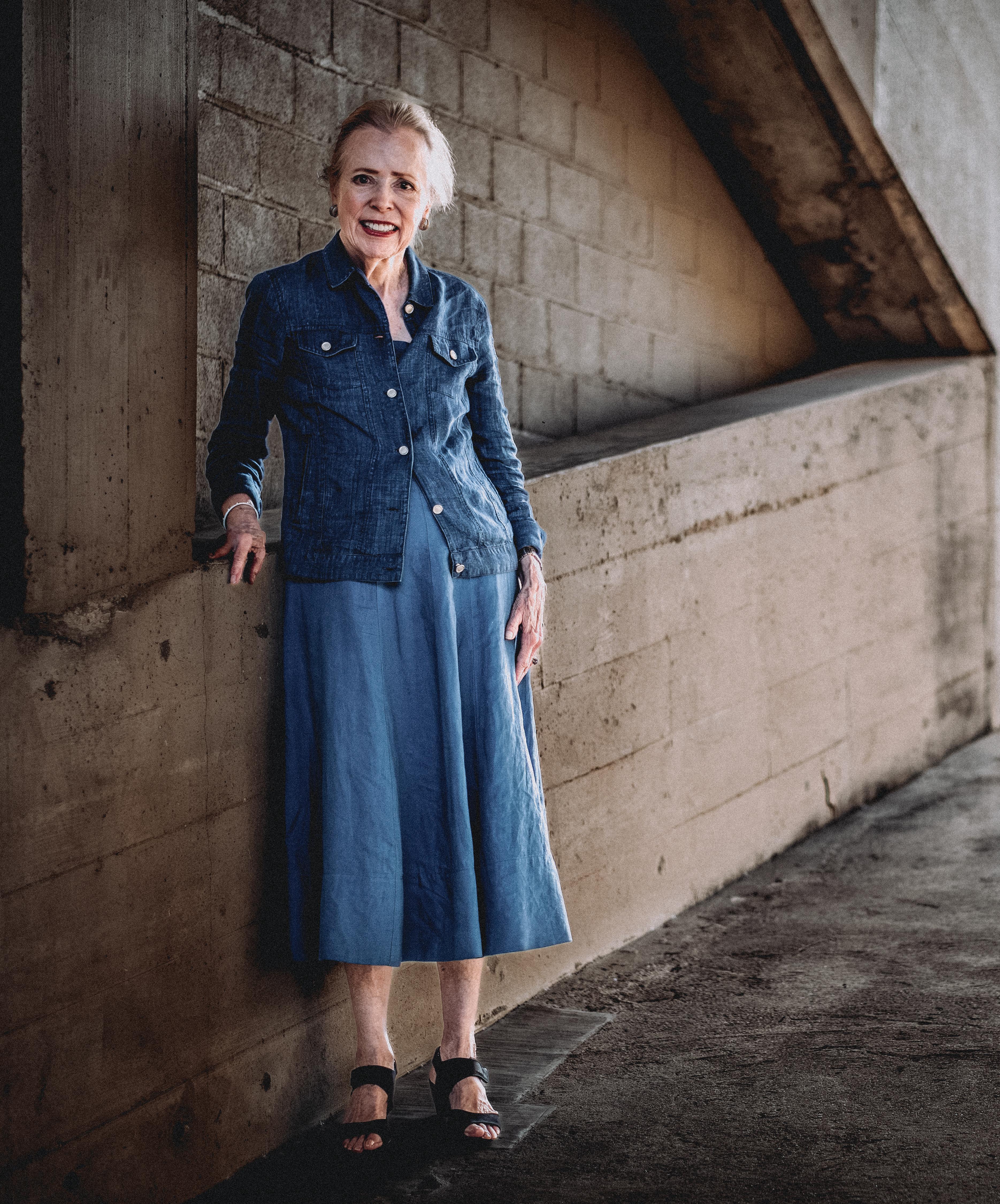

Of the emerging preservation strategy building for
really turned the game around. It woke people up. People are seeing and understanding that what you already have built in your city is an asset.”
stadium.”
Clark blinked.
Not just any field, but a bona fide stadium, a showpiece for the city’s high school athletes. The district had at last come to terms with the city on 38 acres at the corner of University and Lancaster — $7,600 sealed the deal. To Clark, it might as well have been Christmas morning.
Farrington had spent 10 years working to get to this point. And it was worth every inch of blood, sweat, and tears.
“It’s for my boys,” he remarked then.
The final bill to build Farrington came to about $400,000 in 1939.
“He was a broad shouldered, stocky young man,” is how a Star-Telegram reporter described Evan Stanley Farrington. “He had a ready smile, a quiet air of efficiency. And as soon as the Steers went out to work on their old rocky field west of the old school, the boys discovered at once that he knew his football.”
Evan Stanley Farrington was a young man of 30 when he arrived in Fort Worth to become the head football coach at North Side. Born in Lewisville, he had lettered at Baylor in football, was a regular on the theater stage and the senior class president of 1913. After graduation, he moved to Grapevine where he was principal and then superintendent of schools for the 1914-15 school year.
“I aspired to build up the schools to the highest standard, to place them second to none in the country. Encourage your children in their schoolwork and watch their growth and development with careful interest. See that they observe proper hours for study and then see that they do study.”
He left education to work in private industry, but his calling, he discovered, was teaching and education. And his new home was the North Side of Fort Worth.
His connection to the city was through his wife, Sidney King, the niece of John P. King, the “Candy King” of Fort Worth. They had met when both were teachers in Grapevine. She taught in primary grades and left when her husband became superintendent. They married at Magnolia Avenue Christian Church in Fort Worth.
Farrington coached two seasons at North Side before moving into athletics administration and making history. Both were led by Herman Clark, the quarterback of those teams.
Evaline Sellors, a pioneering figure in Fort Worth’s arts scene, is best remembered for her bas-relief sculptures at Farrington Field, her most recognized and enduring works. Commissioned in 1938, the two 8 1/2-foot art deco figures on the stadium’s west side façade embody the strength and athletic spirit of youth, and they stand as a testament to her influence in shaping the city’s public art.
Beyond Farrington Field, Sellors left a legacy of works that became part of Fort Worth’s visual fabric. She created the sculpted finials for the Fragrant Garden at the Fort Worth Botanic Garden, the life-size figure of a young girl titled The Song at the Child Study Center, and stainedglass windows for Beth-El Congregation’s chapel and Grace First Presbyterian Church in Weatherford. Her public commissions also included a bronze bust of Al Hayne, the hero of the 1890 Texas Spring Palace fire, and a new grave marker for Fort Worth founder Maj. Ripley A. Arnold.
Her work, both classical and modern in tone, reflected a commitment to community and accessibility. Today, her sculptures are held in permanent collections across Texas, a lasting reminder of her contributions to Fort Worth’s cultural landscape.

Twice, though, under Farrington the Steers won the city championship. In 1921, they beat Masonic Home 38-14 to claim
the title. In those two years, North Side also twice beat Central — now Paschal. In 1922, the victory over Central was for the city championship.
North Side’s 1922 team was in reality making a run for a state title until it was derailed by Cleburne through what I’ll just simply call the tactics of a sore loser.
The Steers had defeated Cleburne that season, but the Yellow Jackets coach, Fred Erney, filed a protest with the State Interscholastic League, alleging that Clark and teammate Walter Holland had been paid to play baseball the summer before. (Cleburne, by the way, had been co-state champions two years before with Houston Heights after a championship game that ended in a 0-0 tie.)
“An effort is being made to prove Clark was paid for playing baseball with Gainesville last summer,” Farrington said at the time. Holland, as it turned out, had also played baseball, in Waco.
Both players, the coach said, indeed did play baseball and were paid, but only for their expenses, “which is legitimate.” In other words, legal, according to the rules of the State Interscholastic League.
The State Interscholastic League ultimately sustained Cleburne’s protest, taking away the Steers’ victory and allowing Cleburne to move on in the playoffs. The outcome was the only blemish on the Steers’ record that season.
Farrington remained steadfast in his defense of his players.
Farrington left for athletics administration, becoming the Fort Worth athletic director.
Back in a trance, I watched him tell a newspaper reporter about his grand vision of a football stadium and track.
“Think of this. West Lancaster will run right by the stadium when the new bridge is built over the Trinity. TCU and south side traffic can move over Burleson Street [now University Drive], through Forest and Trinity parks, directly to the stadium. North Side people can drive straight to the stadium from the north on Burleson Street. Arlington Heights folks have a straight shot down El Campo. Poly comes in over Lancaster, and Riversiders use Belknap and West Seventh.”
As athletic director, Farrington quickly earned a reputation for running a tight, financially sound athletic operation. By 1932, Fort Worth’s school sports programs — aside from coaches’ salaries — cost nothing to the taxpayers. In a city of 165,000 residents, some 33,000 students,
both Black and white, participated in athletics. Game attendance generated real economic momentum for the city’s athletic programs.
By the mid-1930s, crowds were swelling. In 1934 alone, Paschal and Poly drew more than 16,000 paying fans to LaGrave Field for their game. Farrington had reason to believe that Fort Worth needed its own dedicated stadium. He could point to a surge in paid attendance at LaGrave and Wortham Field over four consecutive years: 51,745 in 1932; 54,940 in 1933; 78,476 in 1934; and 72,994 in 1935. Low ticket prices — 25 cents for general admission and 50 cents for reserved seating — helped fuel the surge, making games accessible and popular, to the point that marquee matchups were pushing existing venues past capacity.
With numbers on his side, Farrington set about advancing his vision for a new stadium. He shifted from rallying athletic support to lobbying political allies — among them Fort Worth’s power broker Amon G. Carter Sr. Carter’s influence helped secure federal Works Progress Administration funding and persuade the city to sell a tract of land east of the Fiesta Grounds, which Carter had promoted as part of Fort Worth’s own centennial celebration.
The stadium was the gathering place for one of the last century’s hottest political hot potatoes. Gen. Douglas MacArthur, at the end of a ticker-tape parade thrown for him after being fired by President Truman, addressed 7,500 at the stadium, a far cry from the estimated 150,000 who showed for the parade. It was the precursor to a hopedfor triumphant presidential campaign in 1952, which ultimately fizzled.
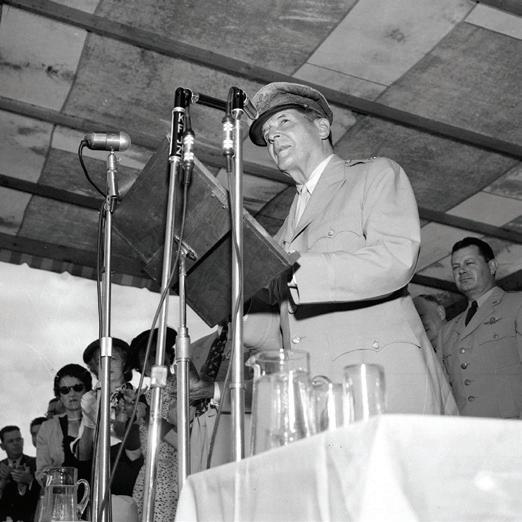
Blueprints were completed and made public on Nov. 9, 1937. Plans called for 10,000 seats on each side of a north-south gridiron, with open ends to the oval. To maximize capacity between the 20-yard lines, the central sections would rise 54 rows high, arranged in semicircles to provide optimal sightlines. A complete lighting system was included for night games.
The financing came together through a combination of $160,000 in WPA support for labor and materials, $90,000 in revenue bonds, and roughly $82,000 from the school district.
The stadium was designed by architects Arthur George King and Everett Lee Frazior Sr., with oversight from Preston M. Geren Sr. It featured advanced overhead lighting and 70-foot columns that framed the west entrance.
The city agreed to sell the land with one condition: It must be used for school district athletic purposes. The property had originally been donated to
the city for public benefit, and if its use ever changed, ownership would revert back to the city.
Precedent has been set on any past deed restrictions with a Tarrant County District court ruling in 2008 that restrictions mandated by the Van Zandt Land Co. to be unenforceable because there was no longer a Van Zandt Land Co., which disbanded in 1947.
A city official told the Fort Worth Star-Telegram in 2020 that the city and school district had an agreement to split the net proceeds of 1.7 acres surround the stadium in the event of a sale.
“From the city’s perspective, there is nothing in the agreement that would prohibit Fort Worth ISD from selling Farrington Field,” the city official said.
At any rate, by 1937, Fort Worth was on the cusp of having athletic facilities to rival any in the nation. For Farrington, it was a longpursued goal finally taking shape.
E.S. Farrington never saw the completion of his prized legacy project.
Farrington had a heart attack and died at his home on Waits Avenue in 1937. He had been watching an I.M. Terrell football game, a team “he has done much to help and encourage,” when he was stricken with what felt like a knot the size of a fist in his stomach near the heart. He was able to drive home, but a doctor was “hastily summoned.”

He was 46.
“Fort Worth and Texas have lost one of the finest men in athletics,” said TCU coach Dutch Meyer. “It is a real blow.”
His very last words he spoke were about the stadium. He discussed it with the doctor. Farrington and his wife are buried in Greenwood Cemetery.
Wrote Amos Melton of the StarTelegram: “We wish to be among the first to suggest that the new field, when and if completed, be named for the man who made it possible. ‘Farrington Stadium’ should stand for many decades as a tribute to one of Texas’ greatest schoolmen. Every football game, every track event, every function in the new plant should be held in affectionate memory of a real man.”
The very first part of my Far-
The stadium “needs to be upgraded and improved,” says Evan Farrington, but “it could be a really cool sports venue with some vision. People just need to have a little vision. Just love it a little.”

rington Field fixation was a Google of the name “Evan S. Farrington.”
Sure enough, Evan S. Farrington III came into view. He lived near Austin. I called a number provided.
That began a close friendship between us — Farrington Field serving as yet another bind between people, though we’ve discovered many other common interests. Evan, an attorney, and his wife Melaine have since moved to Fort Worth.
He spoke to the City Council in June in favor of the new tax district, as did Jerre Tracy, the executive director of Historic Fort Worth Inc. Evan more recently has begun to carry around a copy of his presentation to the Texas Historical Commission. He passed out copies to the City Council.
Evan’s father, Evan S. Farrington Jr., who went by Stanley, was part of the ceremonious groundbreaking festivities in 1937 as a 10-year-old. In 1939, for the dedication ceremonies — young Stanley made the ceremonial first kick. It’s an event that makes son Evan chuckle.
“Dad was not an athlete,” says Evan. “It skipped a generation. Of course, when you’re the athletic director’s son, you got to be an athlete, but he just wasn’t. He said he practiced for that kick for three months. And when it came time, he was in front of the whole city and he kicked it 15 yards. He said he felt like Charlie Brown. He kind of turned around and walked off.”
Amarillo beat Paschal 31-13 in the first game.
Stanley Farrington, who went to Paschal and then both TCU and Texas, later had a long career in medicine. He was also the recipient of a Bronze Star with valor as a medic during the Korean War.
Father and young son — Stanley and Evan — were in attendance at Farrington Field for Arlington Heights’ playoff game against Tyler John Tyler, featuring Earl Campbell in 1973.
“We lived in East Texas, and my dad loved Earl Campbell,” Evan recalls.
“There was no ESPN or internet, nobody really knew outside the city who the really good players around the state or nation were,” said Mike Renfro, Heights’ star. “We started to hear about Earl Campbell about two weeks before the playoffs.
“I like to tell this story, that [Heights’ coach] Merlin [Priddy] was so nervous about what we’d see on film that he wouldn’t even show us
The Dallas Cowboys — The Dallas Cowboys — called about Farrington Field. A 1959 report in the Dallas Morning News told the story of how Herman Clark, then the Fort Worth athletic director, said he was taking a hard pass when the future America’s Team — then an expansion franchise — called to inquire about the availability of Farrington Field on Sundays. The field, Clark told them, was too difficult to maintain just with the school district playing on it.
Kirkpatrick High School won the Class 3A state PVIL championships in 1962-63 at Farrington, the last state football titles won by a school in the FWISD
The Fort Worth Braves, a semi-pro team of the Continental Football League, led by owner Tommy Mercer and former UT star Chris Gilbert, called Farrington Field home in the 1960s. As did Texas Wesleyan football and Carswell’s service league team during WWII. “Tommy Mercer was a great guy. His most endearing quality was he owned beer distributorships. So, we got all the beer we could drink,” Phil Luebbehusen, a former player on the quality of perks.
In June 1946, comedian Bob Hope brought his vaudeville shenanigans to Farrington Field for a fundraiser for the Lena Pope Home.
The first football game televised in the Southwest was Paschal against Amarillo at Farrington in September 1948.
Farrington Field hosted the SWC track meet in 1953, 1960, and 1968.
the tapes because he was afraid no one would show up for the game.
“I have been corrected on that, but I must have been sick the day we saw film because I don’t remember any film because I may not have shown up either.”
Campbell led a 412-yard Lions rushing attack by running up and down the Farrington Field turf and through Heights’ defenders, racking up 183 yards and four touchdowns on 18 carries in a 34-12 victory.
No one beat John Tyler that season. The Lions and their future Hall of Famer won the Class 4A state crown. Earl and Renfro would later become teammates and close friends as members of the Houston Oilers.
The day Evan made his presentation to the City Council would have been his late father’s 98th birthday. “It’s like it’s meant to be,” he said to them.
He and I dropped into Angelo’s last month.
“Here’s the thing, it’s not about the city or my grandfather or anybody,” Evan says. “It’s about the school kids. It’s about the schoolchildren of Fort Worth. His vision was to give them a top-notch facility that everybody could use. Period. I mean, if it were really in such bad shape and needed to be torn down, so be it. But I don’t think it is, and I actually think times have changed and so we have to look at the dynamics now. What are the dynamics? We have this stadium that seats 20,000 people. It’s solid. It needs to be upgraded and improved, but just by fate, the way the city’s grown, it’s right in the heart of the city and it could be a really cool sports venue with some vision.
“People just need to have a little vision. Just love it a little. Love it a little.”
Some months before, Evan presented me a pocket watch.
“I’m giving it to you on loan,” he says. “Until I want it back.”
The inscription on the back of the watch reads:
“Presented by N.S.H.S. Foot Ball Team 1922”
This is a watch presented by E.S. Farrington’s North Side High School football team.
The damn thing still works. Symbolic, methinks.
Just like Farrington Field.
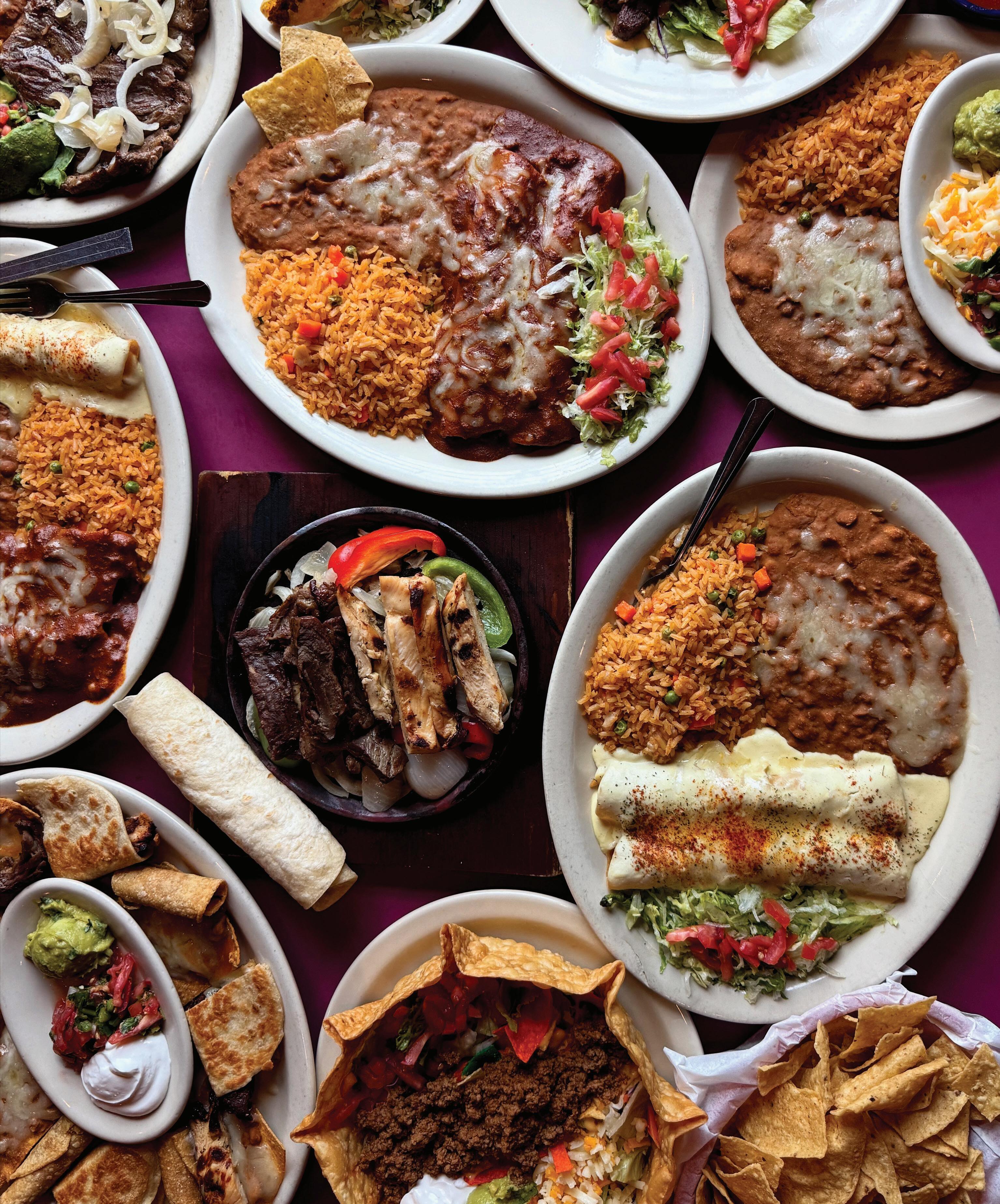
Your Fort Worth Guide to the Cuisine That Was Too Dang Good for a Single Country: Tex-Mex
Forget fancy Mex, interior Mex, and Mex Mex. Bring on the cheese, refried beans, flour tortillas, and chili con carne. We’re talking Tex-Mex. Our lifelong food writer extols the culinary virtues of our city’s favorite cuisine.
By Malcolm Mayhew Photography by Olaf Growald
You can get steaks anywhere, barbecue anywhere, burgers anywhere. But Tex-Mex? Out of these essential Fort Worth food groups, it’s the one that Fort Worth, and Texas as a whole, can rightfully claim as its own. Go beyond Texas’ borders hunting for authentic Tex-Mex, you’ll be disappointed in what you’ll find.
That’s not just because the roots of the cuisine are embedded in Texas soil. It’s also because our city, in particular, possesses such a profound affinity for Tex-Mex that its restaurants have become masters of the craft. Decades after The Original, Joe T’s, and Mexican Inn introduced Tex-Mex to Fort Worth’s masses, thousands of other restaurants have followed, each offering their own takes and twists, shaping the city’s culinary landscape.
The sheer volume of Tex-Mex restaurants across Fort Worth means that for many of us, especially those who grew up here, the cuisine holds a uniquely personal significance. For me, and I’m sure a lot of Fort Worth lifers, Tex-Mex was the first bite of food I took outside of school, home, and McDonald’s. We were a blue-collar family, making barely enough to pay our mortgage, so fine dining was never an option. Going out to eat, for a sit-down meal, meant Tex-Mex. It meant Pulido’s, Fiesta, El Rancho Grande, restaurants where the food was cheap and good and filling.
These restaurants became such an important part — such a normal part — of our lives that a lot of heart-to-hearts, come-to-Jesus talks in my family took place over chimichangas and margaritas, seasoned with a tear or two.
Which brings us to this story, my highly subjective, incredibly opinionated love letter to Fort Worth’s Tex-Mex joints. In this story, there will be no elevated Mexican food. No sea bass tacos, no lobster elote, no duck quesadillas.
No Mex Mex restaurants, either. We see you, we love you, we’ll continue to write about you — just not today.
Today is all about plain and simple enchiladas and tacos and burritos, stuffed, smothered and covered in cheese, chili con carne, salsa, jalapenos, and all the other Tex-Mex fixin’s. Dig in, y’all.




Long before the Near Southside became the hip area it is today, Benito’s was serving stylish riffs on Mexican fare to a mix of day laborers, hospital workers, area residents, and nightcrawlers like me, who hung out there before and after shows at the old Mad Hatters punk club down the street. It’s one of the oldest restaurants on Magnolia, open since 1981, and it has barely changed since then. Servers still don flowery Mexican dresses, Mexican music still fills the air, and the decor is adamantly old-school, like the old Mexican food haunts we all grew up in. The food, though, has undergone a significant change. Along with its signature interior Mexican dishes, the restaurant now serves several Tex-Mex staples, such as traditional enchiladas, tacos, and chips and salsa. Hard to believe there was a time when you couldn’t get chips and salsa at Benito’s, only a big bowl of pico de gallo, which we all gladly wolfed down.
What to get: The Fort Worth Weekly once proclaimed Benito’s to have the best chile rellenos in Fort Worth, and for once, I won’t argue with them. Served two per order, the sizable poblano peppers are stuffed with your choice of beef, chicken, or cheese, then blanketed in a spicy ranchero sauce that ranks as one of the city’s best. Shrimp fajitas are a good go-to, as well, along with tortilla soup and so much else; good breakfast, too.
Info: 1450 W. Magnolia Ave., benitosmexican.com
Fiesta holds a certain place in my life and palette: It’s the first sit-down restaurant where I had Tex-Mex. And that was a long time ago, probably about 45 years. Opened in 1978, the Barriga family’s restaurant was originally located in a converted house on Hemphill on the South Side, and I can vividly remember thinking my family and I were just having dinner at a friend’s home. Which we kind of were. My mom ran a furniture store down the street and was friends with Fiesta owner Anita Barriga, who ran the restaurant with her husband, Louis. Years later, the family moved across the street to a
the Tex Met the Mex:
Tex-Mex cuisine, sometimes mischaracterized as a lesser form of Mexican food, usually by silly, shortsighted food snobs, boasts a rich history deeply intertwined with the cultural evolution of Texas. Its roots stretch back to the culinary traditions of Native Americans and the Spanish colonial period, with further influences from Mexican and Anglo cultures after Texas became part of the United States. The term “Tex-Mex” itself evolved from a railroad abbreviation to describe Tejanos and eventually the region’s distinct Mexican-style food.
According to both cookbooks and history books, the popularization of Tex-Mex began in San Antonio in the 1880s, largely due to the “chili queens” who served affordable and tasty chili con carne in the city’s plazas, solidifying San Antonio’s reputation as the Tex-Mex capital. This period also saw innovations like the commercialization of chili powder by Willie Gebhardt and the introduction of the “combo plate” by Otis Farnsworth, both of which are now hallmarks of Tex-Mex cuisine. These developments helped propel Tex-Mex from local Tejano home cooking to a widely recognized comfort food beloved by those in Texas and beyond.
Made to order, they’re thick, served piping hot and absolutely huge; they come rolled in foil with a plastic ramekin of house butter, not the packaged stuff.
Elsewhere on the menu, the chicken chimichangas are excellent, their fried, flour tortilla shells full of bumps and imperfections that let you know they were just made a few minutes ago, by hand. My wife always gets the chile relleno, with its blanket of chunky red salsa, and I always leave wondering why I didn’t. Info: 3233 Hemphill St., 817-923-6941
bigger space, and even though it grew, Anita always remembered us, always called us by name, always knew we wanted pralines on our way out. She bowed out of the restaurant some time ago and passed away in 2024; son Joe runs it now.
The name is indicative of what you’ll find inside: a light, bright, festively decorated dining room, friendly servers, and an easygoing vibe. The menu is expansive, several pages long, filled with just about every TexMex staple you can think of, plus breakfast dishes, some American favorites, and a ton of seafood plates.
What to get: When you walk in, you’ll see a yellowing Star-Telegram article proclaiming Fiesta serves some of the best nachos in the city. That article ran in 1982, but to this day, it’s still true — every table needs a serving of its nachos; they’re vehemently old school, smothered in refried beans, cheese with jalapenos on the side. It’s quintessential TexMex, quintessential Fort Worth.
Fiesta’s corn tortillas are another must.
A hidden gem in Fort Worth’s crowded Tex-Mex scene, the 30-year-old Dos Molina’s is run by Randy Molina and his mother, Gloria, who’ve created a neighborhood restaurant in the truest sense of the phrase: It rubs up against a residential area just west of the Stockyards. If you didn’t know any better, you’d think it was someone’s house. That goes for the inside, too, which has a homey, neighborhood feel. Most of the people who eat here live here in the neighborhood that surrounds the low-key restaurant. From its chill vibe to cordial service, Molinas is a far cry from the noise and bombast of the Stockyards, although mariachis will sometimes drop by, lighting the place up with music and energy.
What to get: Everything I’ve had here has been great — the cheese enchiladas loaded with chile con carne, the sinfully rich refried beans, even the rice is good, light and airy, not burned and boring like most. My favorite dish is the steak fajita tacos al carbon, made with bite-size bits of skirt steak, as fork-tender as they are well-seasoned. Always ask for a side of the housemade flour tortillas, which strike a perfect balance between thick and thin; they’re among the best in the city.
Info: 404 NW 25th St., 817-626-9394
I really dig this spinoff of Joe T. Garcia’s, specifically the Park Place location, which is open from dawn to dusk. When we lived close by, my wife and I became regulars, there nearly every Sunday for excellent breakfast

tacos stuffed with spicy chorizo and eggs, freshly made agua frescas, and conversations with people we knew. You always run into people you know there. On the weekends, it’s a lively place, full of see-and-be-seeners yet also a lot of locals who walk or bike over from Fairmount and Mistletoe Heights. There’s an attached bakery next door if you want to grab a freshly made sweet bread, cookie, or other sweet treat.
What to get: Esperanza’s serves very good breakfast tacos, made with housemade corn tortillas. A nice plus about breakfast: It’s served all day. Elsewhere on the menu, there are great chicken enchiladas, coated in the usual sour cream sauce or a much better green tomatillo sauce. The cheese enchiladas are real cheese enchiladas, in that they’re stuffed with cheese, then coated in a cheese sauce (some restaurants call those soft cheese tacos). All that cheese — those’ll do you in for the day. Info: 1601 Park Place Ave., esperanzasfw.com
I was first introduced to Pulido’s via its location on East Felix Street in far south Fort Worth, located behind a Howard Johnson’s. We went there a few times when I was a kid. But Fiesta was more my family’s jam. It wasn’t until later in life, when I started working downtown, that I
BEST FLOUR TORTILLAS
They have to be housemade, they have to be thick, they have to be BIG.
Chuy’s: The flour tortillas at the Fort Worthborn minichain, not the more famous Austin chain, are so thick, some diners — OK, we mean us — use them as utensils to sop up every bit of the restaurant’s incredible chili con carne. chuysftw.com
Dos Molina’s: Served piping hot, wrapped in foil, they’re perfect for dipping in salsa — and everything else. 404 NW 25th St.
Mercado Juarez: Elder statesman of Fort Worth’s Tex-Mex scene understands fajitas aren’t fajitas without good flour tortillas; its are made fresh daily. mercadojuarez.com
Uncle Julio’s: The Fort Worth location has lost a step or two post-pandemic, but its flour tortillas — hot, floppy, ideal for stuffing and dunking — are still some of the best in town. unclejulios.com
Our faves are pliable with a strong corn flavor. Fiesta: Thick and huge, made as you watch. orderfiestamexicanrestaurant.com
Mexican Inn (Eighth Avenue location): Housemade throughout the day, they’re still served between two small plates, just like you remember. mexicaninncafe.com
Uncle Julio’s: Most people go for the flour tortillas at this popular chain, but here’s a good pro tip: The corn tortillas are just as good, and they’re also housemade. unclejulios.com
enchiladas with chile con carne. Pulido’s is one of the few Fort Worth restaurants to serve puffy tacos, so you gotta try those, at least once; they make excellent horchata now, too. Info: 2900 Pulido St., pulidostx.com
Long-running south side spot owned by husband-wife team Juan and Gudelia takes me back to a time when it was a cinch to find a good lunch for $10. Not fast food. But a hearty, filling lunch. La Tortilandia always does the trick, with options such as bean and cheese nachos for $5.50, tacos for $3, gorditas for $5, and a cheese enchilada dinner for $12. The menu veers into Mex Mex territory here and there, but most of the dishes adhere to Tex-Mex traditions: nachos, burritos, chile rellenos, quesadillas, and fajitas, all moderately priced. Festively decorated, it’s a fun, family-friendly spot with mariachis, fruit-based milkshakes for kids, and friendly service that makes everyone feel at home.
What to get: While most restaurants treat flautas like a toss-off, here the beef flautas are presented beautifully, on a bed of fresh lettuce and tomatoes and topped with crema and sliced avocados. Other faves include very large and very filling torta sandwiches along with another dish you don’t see that much anymore: chalupas.
Info: 1112 W. Berry St., latortilandia.com
caught onto the original Pulido’s, situated on the street that bears its name. It was there the Pulido family made a name for themselves, serving blue-collar, workingclass Fort Worthians enchiladas with a special red sauce, puffy tacos, and other Tex-Mex faves. Several locations in North Texas and beyond would come and go over the years, and as we’ve documented in this magazine, there was a change in ownership that resulted in the recent resurrection of two locations, with another in the works.
What to get: The “old-fashioned enchiladas,” coated with a spicy red sauce, remain mandatory eats here, as do the cheese
Originally opened as El Asadero, this landmark joint has been a part of the North Side’s thriving Mexican food scene since opening in 1983. Owner Carlos Villarreal, who inherited the restaurant from his mother, Angie, tweaked the name but for the most part has left the recipes untouched, letting four decades’ worth of tradition carry on. Oddly, they charge for chips and salsa, but the small charge is worth it; the salsa ranks as some of Fort Worth’s best. It’s a tiny spot, full of lively chatter and the occasional celebrity; Laura Bush used to hang here.
What to get: Their fajitas are hard to beat. They’re not served in sizzling skillets. Instead,




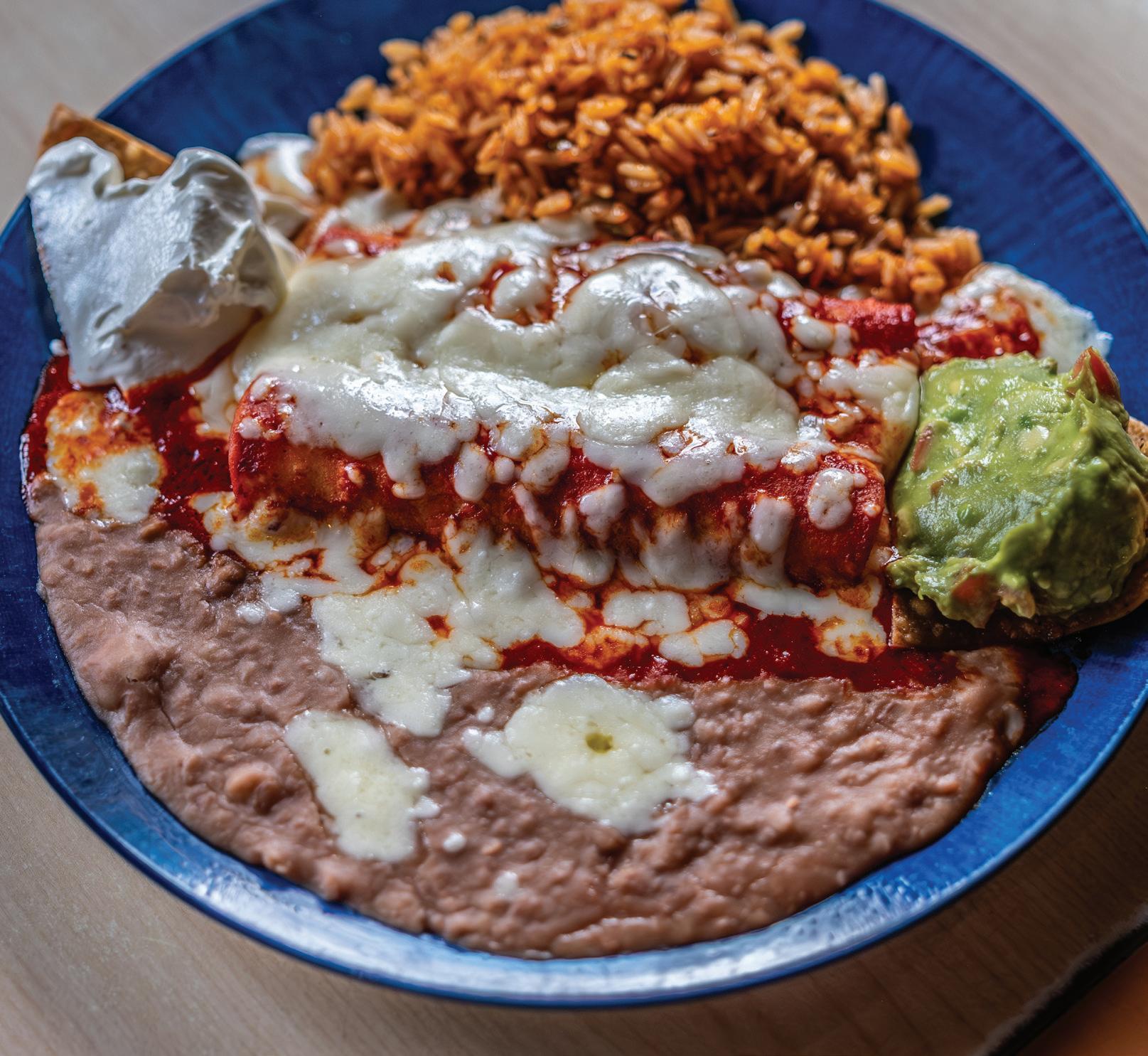

BEST TEX-MEX BREAKFAST
Tex-Mex for early risers.
Cafecito: Bright and very, very pink newcomer from mom-daughter team serves terrific coffee drinks and breakfast tacos wrapped in pink tortillas. 401 W. Magnolia Ave.
Chuy’s: Our go-to for super-cheap breakfast platters (most are $11 or so) that come with thick, housemade flour tortillas. The huevos rancheros are fantastic. chuysftw.com
Esperanza’s Park Place: Cheery spinoff of Joe T’s (there’s also a location across the street from Joe T’s) serves breakfast all day, including excellent renditions of migas, Tex-Mex-inspired omelets, and breakfast tacos. esperanzasfw.com
La Rueda: Impressive selection of breakfast items, from egg platters to breakfast tacos and burritos. 2317 Oakland Blvd.
Tesoro: Tiny breakfast-and-lunch-only spot on the city’s east side serves nearly a half-dozen variations of chilaquiles, a mix of fried tortilla strips, refried beans, salsa and eggs. Get the chilaquiles divorciados; it’s topped with both red and green salsa and a generous portion of beef or chicken fajita meat. 2929 Race St.
meat is piled high, high, high on regular plates; the sizzling is sometimes just for show, anyway. Be it chicken or beef, the meat tastes of outdoor grills — smoky, tender, boundless flavor.
Info: 1535 N. Main St., instagram.com/ asaderosfw
For years, signs outside Jesus Borja’s restaurant advertised “BBQ” but as any savvy diner in Fort Worth knows, Borja’s tiny spot on South Main is also a hub for old-fashioned Tex-Mex. Since opening his namesake restaurant in 1969, the Fort Worth native has always mixed and matched cuisines, serving huge plates of barbecue brisket and ribs alongside chicken-fried steaks, fried chicken dinners, and enchiladas and tacos. His food has won numerous awards, from our publication and others; in 2020, Fort Worth Magazine readers named it Best Tex-Mex. How cool: This little place besting Tex-Mex giants like Joe T’s and so, so many others. Over the years, the restaurant has narrowed its focus, zeroing in on Tex-Mex and American fare. Take the restaurant’s
name literally: Most of Borja’s family members, at some point or another, have worked here — his wife, grandchildren, even great-grandchildren. Today, two years after Borja passed away at age 93, the restaurant is run by his daughter Maria Martinez and her daughter Luisa. Martinez closed Jesus’ for several weeks this year while she recuperated from a health issue; it recently reopened.
What to get: Most go for the beef or cheese enchiladas, which come drenched in grated cheese and a wildly addicting chile con carne. But don’t sleep on the tostadas, crisp, flat corn tortillas topped with your protein of choice, along with a mountain of fresh vegetables. We gotta say, their chicken-fried steak is damn good, too.
Info: 810 S. Main Street., facebook.com/ JesusBBQ/
In 2013, when she opened her first Enchiladas Ole on the East Side, owner Mary Patino Perez found her culinary calling and has been mastering it since then, all the while moving her
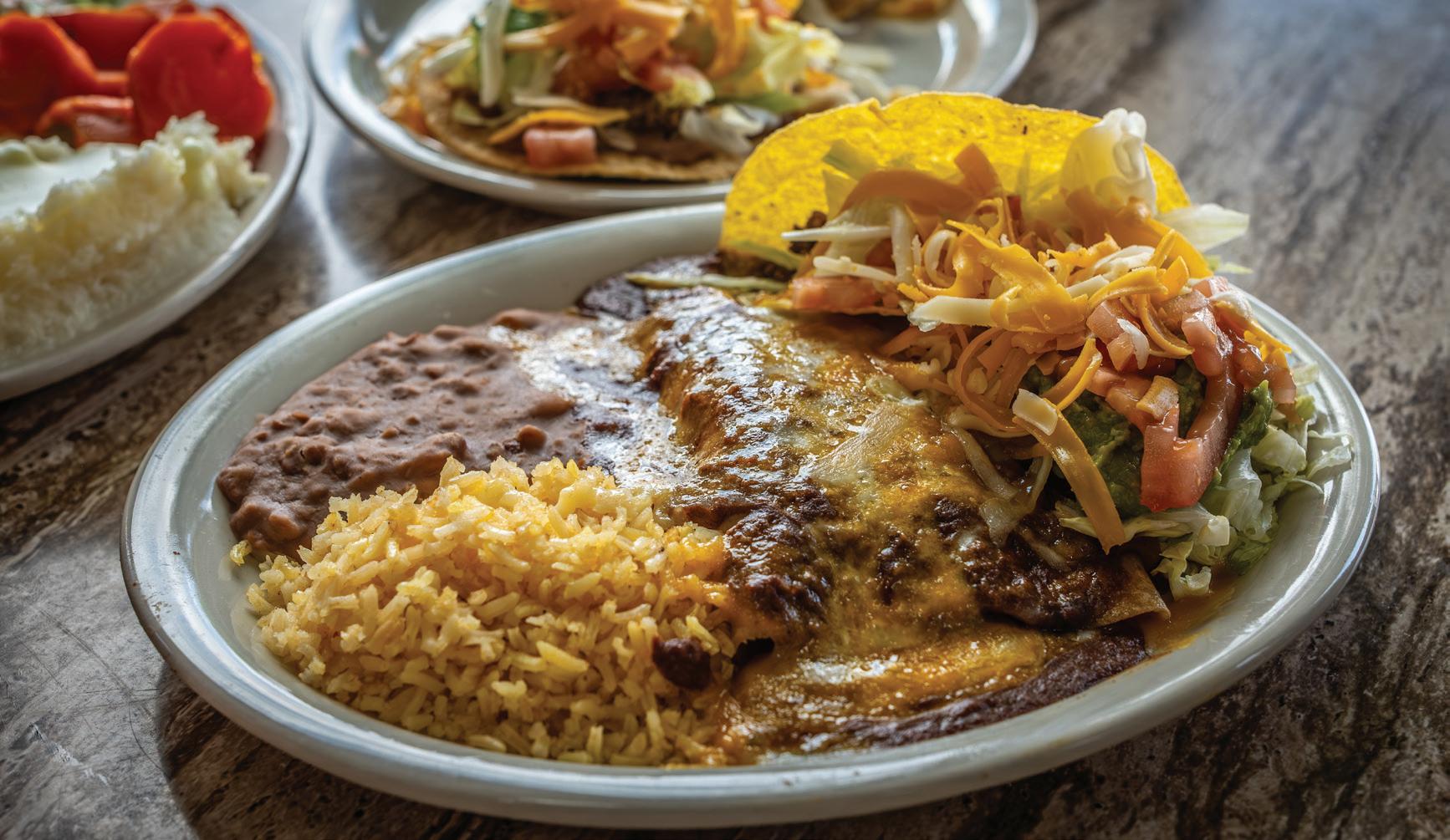






We can live with chips that aren’t that great. But salsa, which we use for not only chipping and dipping but also spreading all over just about everything we order? That’s the heartbeat of any good Tex-Mex restaurant.
El Fenix: Its food may be meh now, but we gulp down their salsa like water. elfenix.com
Los Asaderos: You gotta pay for chips and salsa here, but the salsa — slightly fiery, incredibly fresh — is worth it. 1535 N. Main St.
Los Molcajetes: Family-run spot north of the loop offers two salsas — a mild, chunky salsa and a darker, more complex salsa as addicting as it is spicy. losmolcajetes.com
Mexican Inn: Paired with its corn chips, this bright red salsa remains a Fort Worth classic, no matter the location. mexicaninncafe.com
Pulido’s: Since Pulido’s rebirth, its chips are better than ever, salty and crisp — the ideal accompaniment to its slightly spicy, completely drinkable salsa. pulidostx.com
In 1971, Dallas restaurateur Mariano Martinez and pal Frank Adams invented frozen margaritas, retooling a soft-serve ice cream machine to resemble a 7-Eleven Slurpee-maker. Decades later, frozen margs remain a staple of Tex-Mex cuisine. Some of our Fort Worth faves: Joe T. Garcia’s: The reason we go. joetgarcias.com
Martha’s Mexican Cocina: North Fort Worth haven for good Tex-Mex, opened in 2009 by Martha Calderon, offers an army of margaritas in both traditional and offbeat flavors. marthasmexicancocina.com
Mi Cocina: The Mambo Taxi, a frozen marg swirled with housemade sangria, could be Fort Worth’s tastiest frozen bev. micocina.com
Pappasito’s Cantina: Pappasito’s frozen margarita flight could be the best frozen marg deal in town: three different margs — watermelon, mango chile, and roasted piñaserrano margarita — for $19.95. pappasitos.com
Tex-Mex Hall of Fame
They’re not with us anymore, but their legacies live on in our hearts, minds, and bellies.
Becerra’s Mexican Restaurant: Known for its piled-high plates of nachos, this McCart Avenue spot — where Mexican Real is today — was popular throughout the mid-’80s.
Casa de Guillermo: Opened in 1977, this Weatherford traffic circle mainstay served great Tex-Mex fare and colder-than-cold margs.
El Rancho Grande: Best chips and salsa, best enchiladas, best everything, really. Closed in 2020 after 72 years.
Jimenez: The two Fort Worth Jimenez restaurants — the original location on the North Side and the 700-seat, gargantuan location that took over Casa Bonita’s old digs behind Hulen Mall — flourished for years. But overhead costs forced the Hulen location to close, while a 1992 fire destroyed the North Side store.
Mi Charrito Ray: Open more than 40 years, a Wedgwood staple known for huge lunch and dinner platters and friendly vibes from owners, the Govea family.
Mi Cocinita: Owner Betty Mendez used to sell tamales, burritos, and other Tex-Mex and Mex Mex staples out of her garage, which she converted into a makeshift dining room.
Sammy’s Restaurant: Open 1971 to 2001, Sammy Pantoja’s North Side dive was as famous for its Tex-Mex food as it was for its late-night hijinks; we miss both.

Chuy’s, birthed by restaurateur Jesus “Chuy” Adame in 1982, until a buddy of mine recommended we stop there on the way to a show at Billy Bob’s, back when I was a music critic at the Star-Telegram. It was a meal I’ll always remember: My friend Doug ate his entire dinner without a fork, knife, or spoon; he used the restaurant’s unimaginably thick flour tortillas to sop up all the meat and juices and rice and beans and guacamole in his carne guisada; I was hooked. That location, on North Main, would eventually close, but we just migrated to the location on Boat Club Road (there’s also one in Haltom City).
its size, around 12,000 square feet or so, there’s a certain warmth to the place, amplified by the friendly staff who effortlessly navigate the always-bustling floor. In 2023, Fort Worth restaurant group From Scratch Hospitality acquired the restaurants (there’s also a location in Arlington), but instead of making drastic changes, they’ve instead preserved the essence of what has made Mercado Juarez a Fort Worth staple for over 40 years.
What to get: The menu encompasses most Tex-Mex favorites, from sizzling fajitas served with housemade flour tortillas to hearty enchiladas to fork-tender carne asada. Info: 1651 E. Northside Drive, mercadojuarez.com
restaurant from one location to the next, trying to find the perfect place for it. Judging from the sizable crowds, she seems to have found her home on Camp Bowie Boulevard, where she serves an array of enchiladas, along with Tex-Mex standards such as nachos, tacos, and quesadillas.
What to get: Made with beef she smokes herself in an old smoker put together decades ago by her barbecue-loving father, her brisket enchiladas are absolutely dynamite. Info: 6473 Camp Bowie Blvd., enchiladasole.com
I didn’t discover Fort Worth-bred
What to get: The carne guisada is perfect, just perfect: bite-size bits of tender beef bathed in a spicy brown gravy, served with rich, old-school refried beans. There’s not a better carne guisada in the city. But they do mostly everything well, from their simple bean and cheese nachos to their huge breakfast plates to their lunch and dinner platters filled with enchiladas and tacos. This is the Chuy’s you should be eating at. Info: 9120 Boat Club Road, chuysftw.com
Mercado Juarez has long been a beloved Fort Worth institution, serving up classic Tex-Mex dishes in a friendly, vibrant atmosphere; you’d never guess this place used to be a big, cold warehouse. To keep guests from realizing that, the restaurant’s original owner, Don Bowden, decorated it with lavish chandeliers, life-size murals, and enough greenery to fill a nursery — or small town. Despite
Hard to miss in its bright yellow, converted 1920s ranch house, La Rueda has been serving East Side Tex-Mex aficionados since the Villagomez family opened it in 2012. It’s open for breakfast and lunch only, and the lines start early, especially on the weekends, when people pile in for menudo, huge pancakes, and big, inexpensive plates of Tex-Mex classics, such as fajitas, chimichangas, nachos, and flautas. The restaurant may have dive vibes, but the food is nicely presented and often decorated with cheffy touches — streaks of sour cream, fanning avocado slices, sprinkles of chopped cilantro. It’s a cut above, way, way above, the Tex-Mex norm.
What to get: Among the must-get dishes: chicken enchiladas, which come stuffed with

a mix of shredded meat, both white and dark. In addition to the creamy sour cream sauce, they come bathed in a mild tomatillo sauce, making them a bit different from typical chicken enchiladas. We like the chile relleno, too, with its light batter and heavy, thick ranchero sauce, and pork chimichanga — a dish you don’t see very often. There’s a huge breakfast menu, too, with dishes such as chilaquiles, migas, and omelets, all cooked to order. Get a side of the housemade corn tortillas; they’re fantastic.
Info: 2317 Oakland Blvd., 817-535-3792
People who say there’s no good food beyond the loop haven’t discovered the joys of Los Molcajetes’ north Fort Worth location, saddled next to I-35, encircled by a shark tank of chains. LM is part of a local family of Tex-Mex restaurants; there are also locations in Mansfield and Roanoke and a sibling, Mi Pueblo, in Hurst. Los Molcajetes stands out for its superior salsa, of which there are two, a chunky mild salsa and a spicier, thinner salsa; expansive menu; and vibrant atmosphere, which often includes loud convos and mariachis and combinations thereof. It’s a big, noisy, fun place.
What to get: One of the restaurant’s most popular dishes is a combination of two dishes: fajitas and enchiladas. Its signature fajita enchiladas feature three cheese enchiladas topped with a sizable serving of beef or chicken fajita meat. Served with freshly made guacamole, grated cheddar cheese, rice and beans, it’s a huge meal for a good price — under $20. It’s a lot more filling than a regular order of fajitas, and cheaper.
Info: 4320 Western Center Blvd., losmolcajetes. com
The Mexican Inns you and I grew up going to — downtown, East Lancaster, and Henderson — are long gone, but the Eighth Avenue location is a pretty close reminder of what the historic restaurants, whose roots date to 1936, were like before they were purchased by a major restaurant group. Founder Tiffin Hall may have been a notoriously sketchy character who ran a local gambling business, but we have him to thank for the city’s best chips and dip: corn chips that look like Fritos but are bigger and thicker and a thick, red salsa as memorable as your first date. Freshly
made corn tortillas, served between two plates, are also a culinary time warp, as good as they were the first time you had them; if only they were still served with individual pats of butter, not the packaged stuff. Can’t say that I’ve spent much time at the new Mexican Inns, but Eighth Avenue has retained its old-school charm, another reason to revisit this TexMex warhorse.
What to get: The cheese enchiladas with chili con carne are still my favorite enchiladas in Fort Worth. The chile con carne’s deeply savory ground beef marries perfectly with the molten, gooey cheese — a simple combination that no other Tex-Mex restaurant in Fort Worth has been able to topple, even though they’ve had nearly a century to do so.
Info: 1625 Eighth Ave., mexicaninncafe.com
Regardless of your thoughts on the familystyle dinner and strong frozen margs, one thing is for certain: Joe T. Garcia’s will outlive us all. What other Fort Worth Tex-Mex restaurant commands long waits that stretch out to its parking lot? What other Tex-Mex restaurant attracts celebs like Billy Bob Thornton and Axl Rose? What other FW Tex-Mex restaurant has a patio that covers an entire city block? People don’t go to Joe T.’s because it’s the best Tex-Mex in town. They go because it’s a living, breathing piece of Fort Worth folklore — a rare constant in a city changing by the second. Don’t know about you, but championing places like Joe T’s feels more important now than ever. Here’s to another 90, Joe. joetgarcias.com

BY BRIAN KENDALL
Like a great book or an earwormy song, the lessons of an exceptional teacher tend to stick with you — even if they drive you a little mad at times. And you can rest assured these 10 outstanding educators (photographed here alongside their favorite inspirational quotes) will forever be a bug in the ear of many young Fort Worthians — in the best way possible, of course. Covering the gamut of grades, subjects, and school types — public, private, and charter — these Top Teachers, nominated by students, parents, and fellow faculty members, have made lasting impressions that will echo beyond the classroom for years to come.
How We Do It: Every year, Fort Worth Magazine requests nominations from Fort Worth-area students, parents, and school faculty members to honor the city’s best educators. The online nomination form includes a field where nominators can share a brief explanation of why their chosen teacher deserves recognition. The magazine’s editorial staff then selects 10 educators based on both quantity and quality of nominations. All teachers selected are then vetted and receive recommendations from their school’s leadership.
Few teachers get to experience what Aneesha Lee just experienced . Throughout her 20 years as an educator, Lee had always taught Pre-K and landed at Rivertree Academy five years ago teaching Pre-K 3. After three years, Lee moved up to Pre-K 4, following the same students she had the previous year. The next year, she graduated to kindergarten.
“So, I had [the same students] for three years,” Lee says. “And this is my last year teaching them because I’ll be staying at the kindergarten level. Despite the difficulty saying goodbye, she’s still very much looking forward to a new crop of kiddos.
“I’m excited for the next group to come in and see what I can do to further their education.”


Fort Worth Country Day,
This marks Jeff Capaldo’s first year at Fort Worth Country Day, having spent his previous nine years teaching in Keller ISD, and he jokingly attributes his Top Teacher honor to getting lucky with his first group of students and parents. But speaking with Capaldo, one quickly picks up on his selfdeprecating humor. “Maybe I’ve gotten lucky 10 times,” Capaldo says, referring to the number of years he’s been behind the teacher’s desk. “And this year, I’m going to be found out that I don’t know what I’m doing.” One couldn’t possibly be so fortunate, Mr. Capaldo. You’re doing something very, very right.
Krista Richard Godley Middle School, Art (Previously Arlington Heights)
Krista Richard is changing schools to be closer to her home in Granbury, venturing about 30 minutes from her previous stomping grounds at Arlington Heights. She will be teaching at Godley Middle School next year. Richard’s first Fort Worth teaching job was at Kirkpatrick Middle School, where she taught for 13 years and built the art program up before heading Arlington Heights. A big believer in her students tackling community projects, you can see her students’ artwork all over town. According to Richard, “I take advantage of every opportunity to get a kid to learn outside the classroom.”


Great Hearts Lakeside, Seventh Grade History
As a history teacher, Zachary Lycans tells stories. And much like a good novel, main characters have full-blown arcs with highs and lows. Except in Lycans’ stories, the characters and events actually existed and occurred. “And I warn them,” Lycans says, “don’t start falling in love with the characters. I’m like, ‘Guys, there are maybe five people we’re going to cover this whole year that come out looking good.’” And like any great story, Lycans brings it back to the bigger picture. “I tell students, ‘There are going to be people in your life that make poor decisions. How does that affect how you view them? What does that look like in the context of everything else about them? What about you?’ It helps to give a rounded view of humanity.”

Kenneth Amos
Polytechnic High School, AVID, English, and Yoga
Through AVID, Kenneth Amos isn’t just running through curriculum within a set syllabus; he’s teaching students how to tackle life. “[AVID] is a program that offers strategies and techniques for organization and articulation, communitybased learning, teamwork, and individual determination.” Amos says one can tell when a student is in AVID, which stands for Advancement Via Individual Determination. “[You can see them using] all the different strategies they’ll take with them after graduating.” Thoughtful, intuitive, and open-minded, Amos also teaches English and yoga. Yes, yoga — because he wants to expose students to helpful disciplines outside the realm of their everyday lives.
The quote from B.F. Skinner, a revolutionary psychologist, isn’t just Heather Minton’s favorite quote, she actively tries to live it every day of her life. “Everything I do and everything I say has an impact on me. It shapes me, who I am, and those around me,” Minton says. At the Jane Justin School, a special education school at Cook Children’s Hospital, Minton works with children who have developmental and learning disabilities with the goal to make each child the best scholar, citizen, and loyal friend they can be. “Teaching them to be kind, respectful, patient, and forgiving,” she says. “I try to teach them and show them that their action makes a difference, and they can make a positive difference.”


Lisa Robinson
Southwest Christian School, Seventh Grade Spanish and Leadership
Teaching a course that tackles leadership the first half of a semester and Spanish the second half, the curriculum made Lisa Robinson realize she was right where she needed to be. The dual course had long been a requirement at Southwest Christian School, and having grown up in Mexico, Robinson says it was tailor-made for her. Though Robinson is obviously a dang good educator, she’s not resting on her laurels. She’s currently pursuing her master’s degree with a principal certificate.
“I love the variety of [being a principal],” Robinson says. “And I really love encouraging people — students, parents, and teachers — to do their best.”
All Saints’ Episcopal School, Bridge
One of the notable, unique offerings at All Saints’ Episcopal School is Bridge, a stepping stone for youngsters between Pre-K and kindergarten. “We’re the only big private school in Fort Worth that has [Bridge],” Patyk says of the program, which is designed for children who aren’t quite ready for the demands of kindergarten. “We do a mesh between Pre-K and kinder, so it’s wherever they are [in their educational journey]; that’s where we meet them. If they’re ready to read, we start teaching them how to read. If they’re not there yet, we do letter sounds and whatever they need [to advance to the next step].”

Ron Clark Cassata Catholic High School, Math
Ron Clark grew up in Haltom City before moving to the West Side. He then went to TCC before attending TCU and then ultimately graduating from Texas Wesleyan. So, Clark’s experienced about every nook and cranny the city has to offer. But, he’s found his home at the Near Southside’s Cassata Catholic High School, where he’s been teaching math for 18 years. And what does he love so much about it? Well, it’s the feeling that he’s making a positive difference. “I’m recounting the number of times that I’ve been asked by a student to introduce them at graduation as either the valedictorian or the salutatorian, and it tends to make you think you’ve made a difference in their lives.”


Rogelio Alfaro
Trimble Technical High School, Collision Repair
Rogelio Alfaro’s quote is from the man who previously had Alfaro’s job at Trimble Tech. Alfaro was his student, and, in classic takes-one-to-know-one style, he could sniff out a future collision repair teacher. And, yes, the course is exactly what it sounds like — these kids learn the ins and outs of repairing cars after collisions. Alfaro started teaching at 24 and has now been at Trimble Tech for 35 years. And his experience shows. Alfaro’s students regularly bring home victory hardware from SkillsUSA competitions. “You’ll see all my state plaques in my office,” Alfaro says. “At least the ones since 2014. There’d be more, but that’s when I started putting the plaques up.”


































































































































































































































































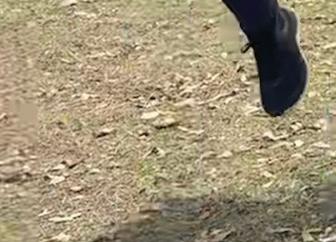


























individualized, evidence-based special education for students ages 5–21 with learning and developmental disabilities. Our small class sizes, custom learning plans, and experienced faculty support the academic, social, and emotional growth of every student.
As part of the Child Study Center at Cook Children’s, we go beyond the classroom with hands-on learning, communitybased experiences, and enrichment programs designed to prepare students for meaningful, independent lives.


Accredited by Cognia and named a School of Excellence by the National Association of Special Education Teachers, Jane Justin School is proud to be a beacon of hope for families.
√ Congratulations to Heather Minton, selected as a Top Ten Teacher in Fort Worth! Her 24 years of dedication, including 20 at JJS, inspire our students and staff every day.

Let’s talk about how we can support your child’s journey. Call Admissions at 682-303-9356 to learn more.
All Saints Catholic School Fort Worth, Fort Worth, 817.624.2670, allsaintscatholicschool.org
All Saints’ Episcopal School Fort Worth, Fort Worth, 817.560.5700, aseschool.org
Allegiance Academy, Euless, 847.732.0611, allegianceacademy.com
Alliance Christian Academy, Fort Worth, 817.439.8425, aca-littlesprouts.com
Anderson Private School for the Gifted Talented and Creative, Fort Worth, 817.448.8484, andersonschool.net
Azle Christian School, Azle, 817.444.9964, azlechristianschool.org
Bethesda Christian School, Haltom City, 817.281.6446, bethesdachristianschool.org
Braveheart Academy Inc., Arlington, 817.422.9135, braveheartacademy.org
Burleson Adventist School, Burleson, 817.295.6812, burlesontx.adventistschoolconnect.org
Burton Adventist Academy, Arlington, 817.572.0081, burtonacademy.org
Cassata High School - Fort Worth, Fort Worth, 817.926.1745, cassatahs.org
Children's University, Arlington, 817.784.6655, childrensuniversity.com
Chisholm Trail Academy, Keene, 817.641.6626, cta.school
Christian Life Preparatory School, Fort Worth, 817.293.1500, clps.info
Cleburne Adventist Christian School, Cleburne, 817.645.4300, cacs4christ.com
Cleburne Christian Academy, Cleburne, 817.641.2857, ccacleburne.com
Community Christian School, Mineral Wells, 940.328.1333, ccsmw.org
Coram Deo Academy, Flower Mound, 682.237.0232, coramdeoacademy.org
Cornerstone Christian Academy, Granbury, 817.573.6485, ccagranbury.com
Couts Christian Academy, Weatherford, 817.599.8601, coutschristianacademy.com
Covenant Christian Academy, Colleyville, 817.281.4333, ccanet.org
Covenant Classical School, Fort Worth, 817.820.0884, covenantfw.org
Cristo Rey Fort Worth Catholic High School, Fort Worth, 817.720.3023, cristoreyfortworth.org
Crossing Heritage Academy, Fort Worth, 817.903.8259, crossingheritage.com
Crown of Life Lutheran School Colleyville, Colleyville, 817.251.1881, crownoflife.org
Denton Calvary Academy, Denton, 940.320.1944, dentoncalvary.org
E.A. Young Academy, Roanoke, 682.831.1776, eayoungacademy.com
Fellowship Academy, Kennedale, 817.483.2400, fellowship-academy.org
Fort Worth Academy, Fort Worth, 817.370.1191, fwacademy.org
Fort Worth Adventist Junior Academy, Fort Worth, 817.370.7177, fwaja.org
Fort Worth Christian School, Fort Worth, 817.520.6200, fwc.org
Fort Worth Country Day, Fort Worth, 817.732.7718, fwcd.org
Grace Classical Christian Academy, Granbury, 509.954.3911, graceclassical.com
Grace Preparatory Academy, Arlington, 817.557.3399, graceprep.org
Grapevine Faith Christian School, Grapevine, 817.442.9144, grapevinefaith.com
Green Oaks School, Arlington, 817.861.5000, greenoaksschool.org
Harvest Christian Academy - Keller, Keller, 817.485.1660, hcasaints.org













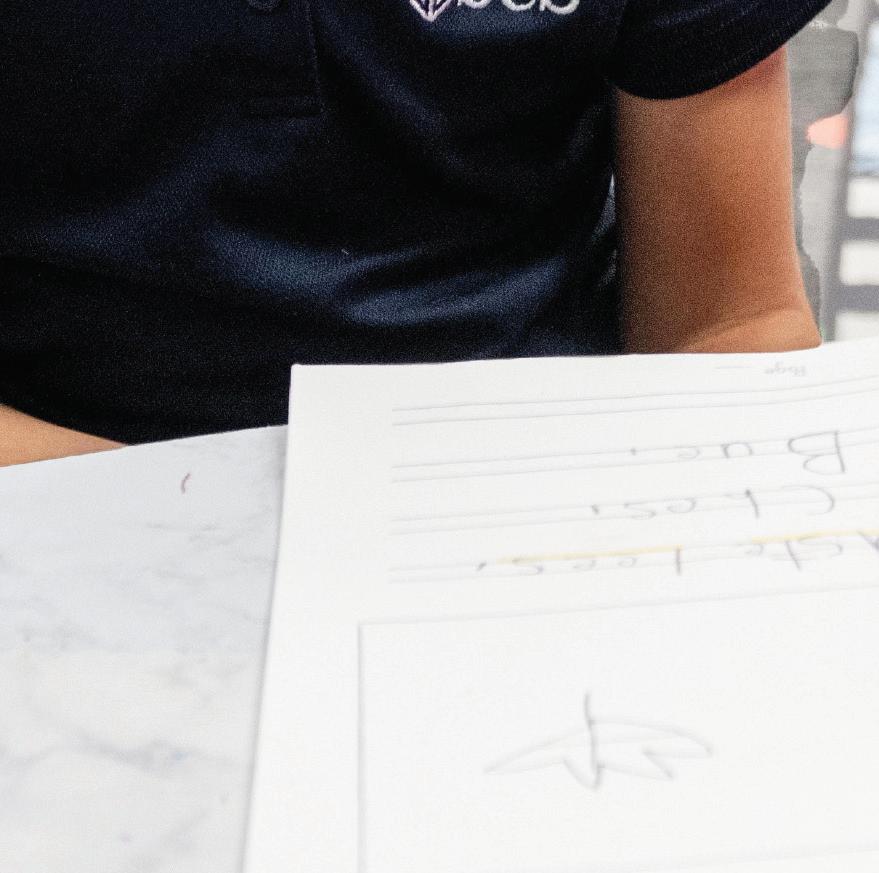










School
Harvest Christian Academy - Lantana Campus, Bartonville, 940.240.2550, hcasaints.org/lantana
Heritage Christian Academy, Haslet, 817.439.3833, hcahaslet.org
Hill School of Fort Worth, Fort Worth, 817.923.9482, hillschool.org
Holy Cross Christian Academy, Burleson, 817.295.7232, hccaburleson.com
Holy Family Catholic School Fort Worth, Fort Worth, 817.737.4201, hfsfw.org
Holy Trinity Catholic School Grapevine, Grapevine, 817.421.8000, holytcs.org
Immaculate Conception Catholic School Denton, Denton, 940.381.1155, catholicschooldenton.org
Jane Justin School, Fort Worth, 817.390.2831, cscfw.org
Joshua Adventist Multi-Grade School, Joshua, 817.556.2109, jams.joshuasda.org
Joshua Christian Academy, Joshua, 817.295.7377, joshuabaptist.com
Keene Adventist Elementary School, Keene, 817.645.9125, kaes4kids.com
Key School and Training Center, Fort Worth, 817.446.3738, kcld.org
Koan School, Denton, 940.294.6520, koanschool.org
Lake Country Christian School, Fort Worth, 817.236.8703, lccs.org
Lakeland Christian Academy, Lewisville, 972.219.3939, lakelandbaptist.org
Legacy Classical Christian Academy, Haslet, 817.382.2322, legacyclassical.org
Liberty Christian School, Argyle, 940.294.2000, mylcs.com
Mercy Culture Preparatory Academy, Fort Worth, 817.332.3351, calvaryacademy.com
Mercy Preparatory Academy, Waxahachie, 469.505.8377, mercyprep.org
Merryhill School Arlington, Arlington, 817.472.9494, arlington.merryhillschool.com
Messiah Lutheran Classical Academy, Keller, 817.431.5486, mlcatexas.org
Miss Endy's Christian Academy, Fort Worth, 817.737.9031, missendyschristian.com
Montessori School of Fort Worth, Fort Worth, 817.732.0252, msftw.org
My Dreams Academy, Fort Worth, 972.876.9861, mydreamsacademy.org
Nazarene Christian Academy, Crowley, 817.736.3113, nazarenechristianacademy.org
Nolan Catholic High School, Fort Worth, 817.457.2920, nolancatholichs.org
North Central Texas Academy, Granbury, 254.897.1361, northcentraltexasacademy.org
Northstar School, Arlington, 817.478.5852, northstarschool.net
Ovilla Christian School, Red Oak, 972.617.1177, ovillachristianschool.org
Pantego Christian Academy, Pantego, 817.460.3315, pantego.com
Park Row Christian Academy, Arlington, 817.277.1021, parkrowchristian.net
Rivertree Academy, Fort Worth, 817.420.9310, rivertreeacademy.org
Salam Academy Frisco, Frisco, 972.704.4373, salamfoundation.us
School of Lexia, Mansfield, 817.823.9014, schooloflexia.org
Southwest Christian School - Lakeside Campus, Fort Worth, 817.294.9596, southwestchristian.org
Southwest Christian School-Chisholm Trail Campus, Fort Worth, 817.294.0350, southwestchristian.org
St. Andrew Catholic School, Fort Worth, 817.924.8917, standrewsch.org


St. Elizabeth Ann Seton School Keller, Keller, 817.431.4845, seascc.org
St. George Catholic School, Fort Worth, 817.222.1221, stgeorgecatholic.org
St. John the Apostle Catholic School, North Richland Hills, 817.284.2228, stjs.org
St. Joseph Catholic School, Arlington, 817.419.6800, hrcstx.com
St. Joseph Catholic School Waxhachie, Waxahachie, 972.937.0956, stjosephwax.org
St. Maria Goretti Catholic School, Arlington, 817.275.5081, smgschool.org
St. Paul Lutheran School Fort Worth, Fort Worth, 817.332.2281, stplcfw.org
St. Paul's Preparatory Academy, Arlington, 817.561.3500, stpaulsprep.com
St. Peter the Apostle Catholic School - Fort Worth, Fort Worth, 817.246.2032, spsfw.org
St. Rita Catholic School Fort Worth, Fort Worth, 817.451.9383, saintritaschool.net
Starpoint School, Fort Worth, 817.257.7141, starpoint.tcu.edu
Temple Christian Academy, Flower Mound, 972.874.8700, templechristian.com
Temple Christian School, Fort Worth, 817.457.0770, tcseagles.org
The Agape School, Bedford, 806.470.6596, theagapeschool.org
The Clariden School, Southlake, 682.237.0400, claridenschool.org
The Montessori Academy of Arlington, Arlington, 817.274.1548, tmaonline.org
The Novus Academy, Grapevine, 817.488.4555, thenovusacademy.org
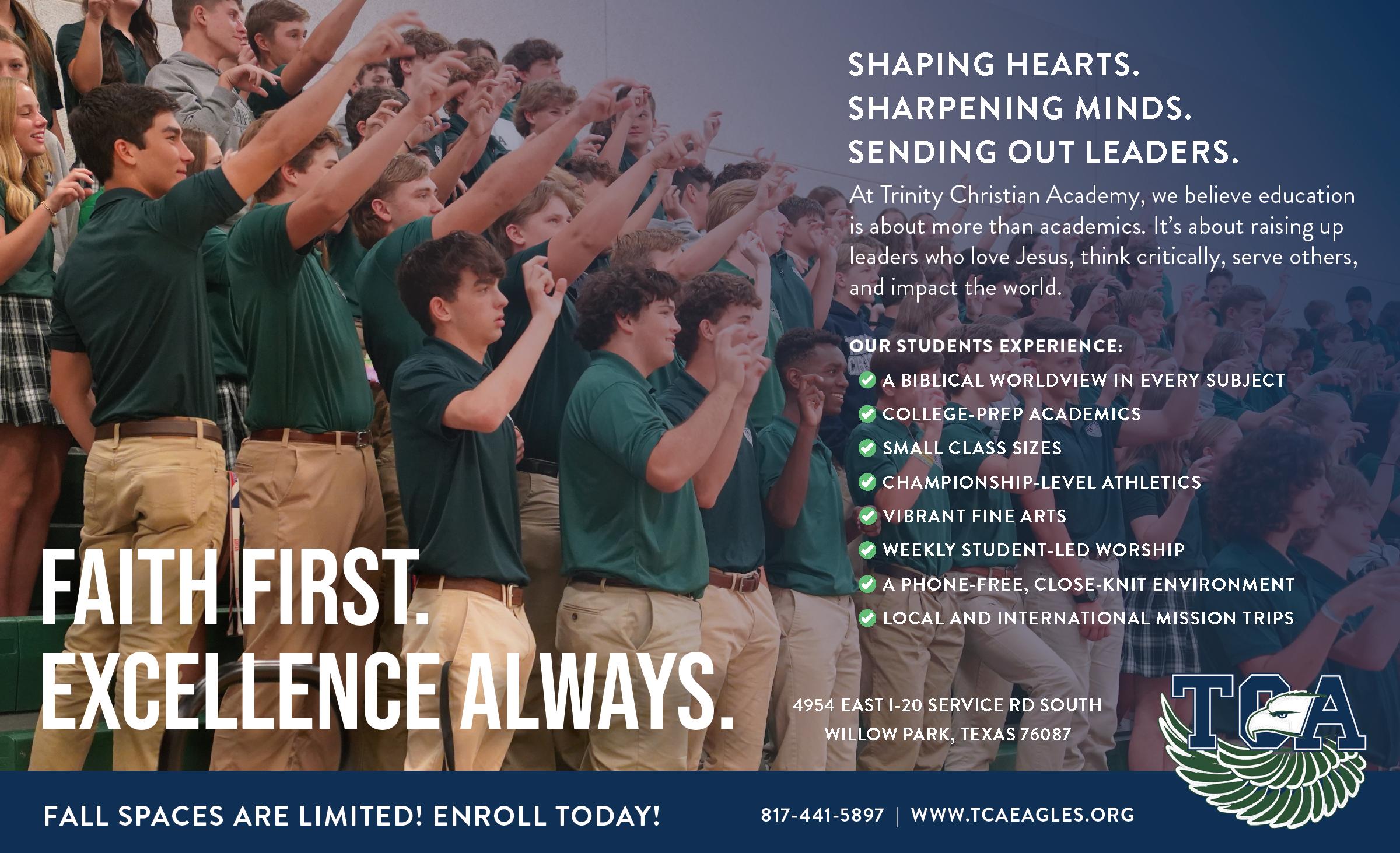






The Oakridge School, Arlington, 817.451.4994, theoakridgeschool.org
The Selwyn School, Argyle, 940.382.6771, selwynschool.com
The Spellmon Fine Arts Academy, Forest Hill, 817.534.4646, tsfaa.org
Trinity Christian Academy, Willow Park, 817.441.7901, tcaeagles.org
Trinity Preparatory Academy, Keller, 817.683.1453, trinityprepkeller.org
Trinity Valley School, Fort Worth, 817.321.0100, trinityvalleyschool.org
Victory Baptist Academy, Weatherford, 817.596.2711, vbainfo.com
Victory Christian Academy, Decatur, 940.626.4730, victorychristianacademy.org
Waxahachie Preparatory Academy, Waxahachie, 972.930.0440, wpacademy.org
Waypoint Montessori School, Colleyville, 817.354.6670, waypointmontessori.org
Weatherford Christian School, Weatherford, 817.341.0000, weatherfordchristian.com
State-Recognized Accrediting Commissions:
Accreditation Commission of the Texas Association of Baptist Schools (ACTABS)
American Association of Christian Schools (AACS)
American Montessori Society (AMS)
Association of Christian Schools International (ACSI)
Association of Christian Teachers and Schools (ACTS)
Association of Classical and Christian Schools (ACCS)
Christian Schools International (CSI) Cognia (COGNIA)
Independent Schools Association of the Southwest (ISAS)
International Christian Accrediting Association (ICAA)
Lutheran Schools Accreditation Commission (LSAC)
Middle State Association Commissions on Elementary and Secondary Schools (MSA-CESS)
National Christian Schools Association (NCSA)
Southern Association of Independent Schools (SAIS)
Southwestern Association of Episcopal Schools (SAES)
Texas Alliance of Accredited Private Schools (TAAPS)
Texas Catholic Conference Education Department (TCCED)
Texas Seventh-Day Adventists (TSDA)
Wisconsin Evangelical Lutheran Synod School Accreditation (WELSSA)

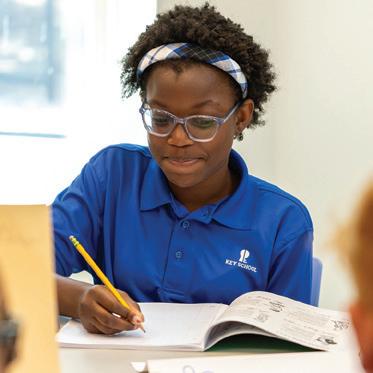






































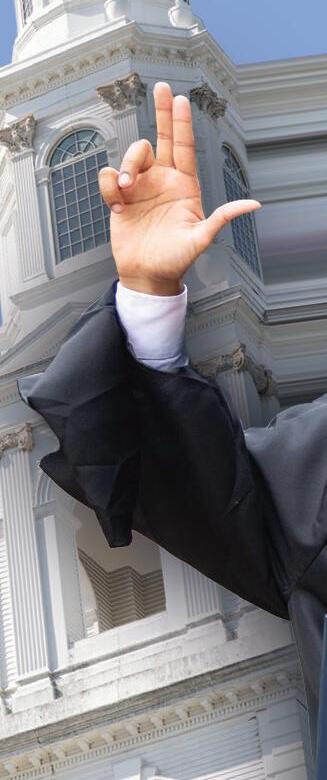
















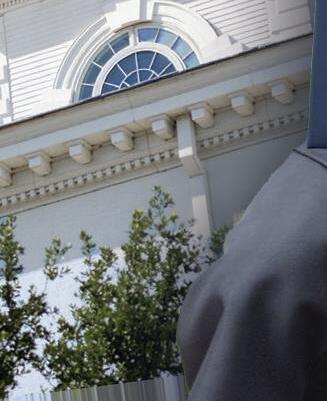












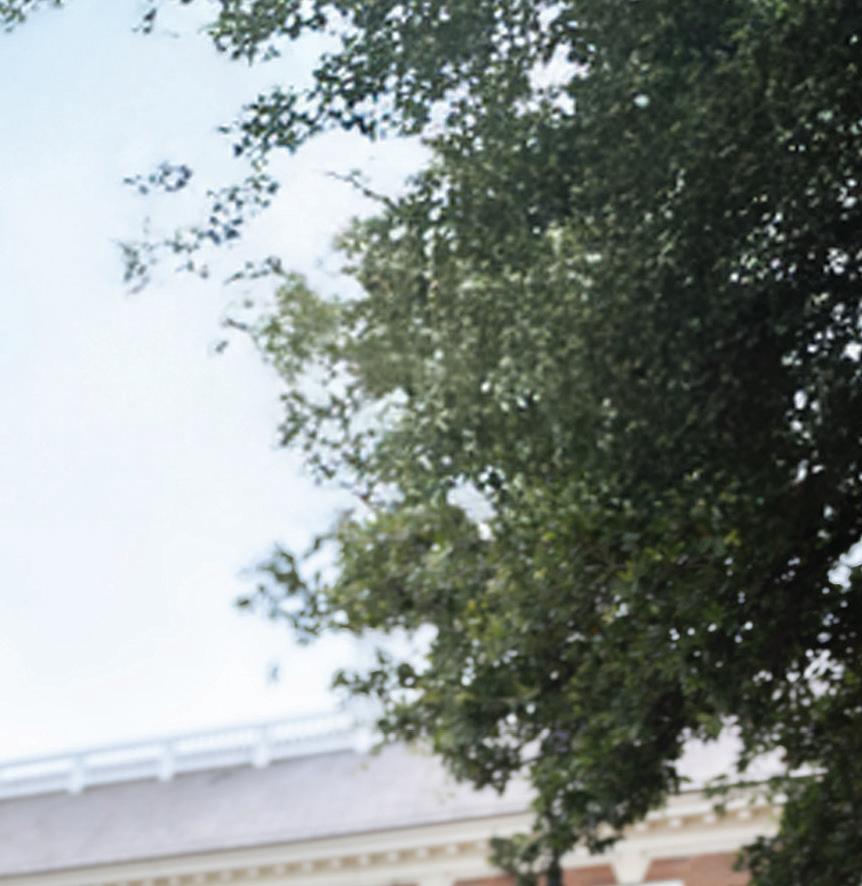










































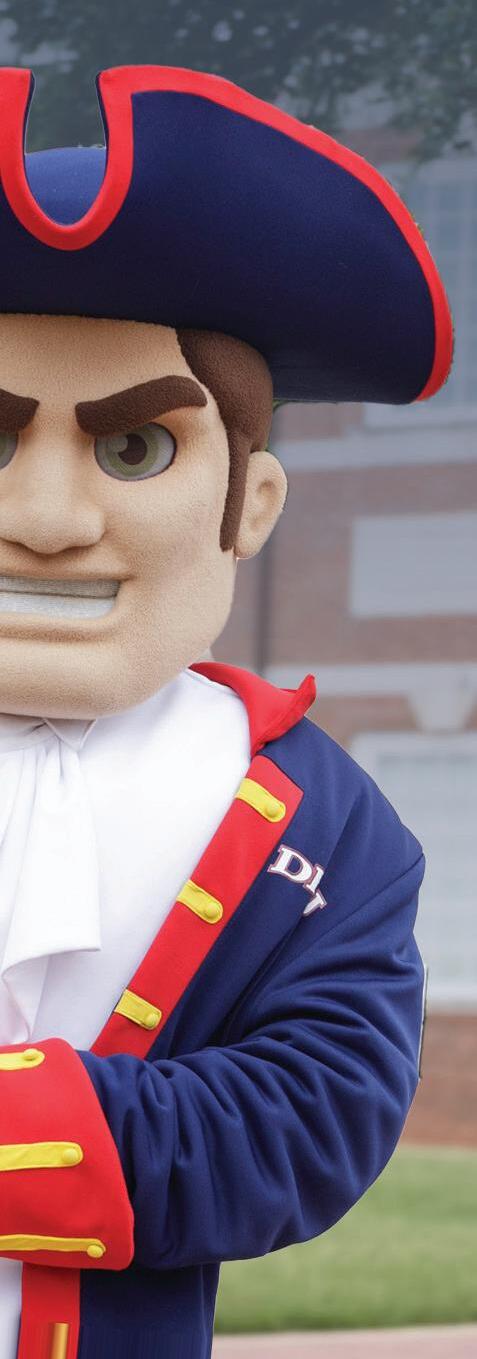











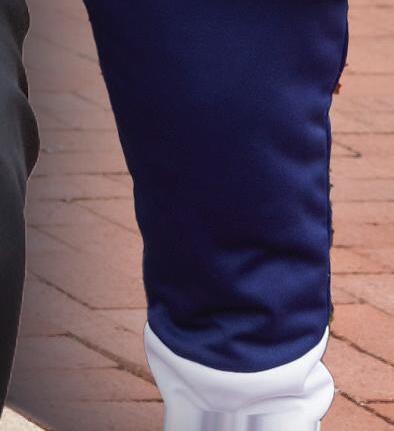











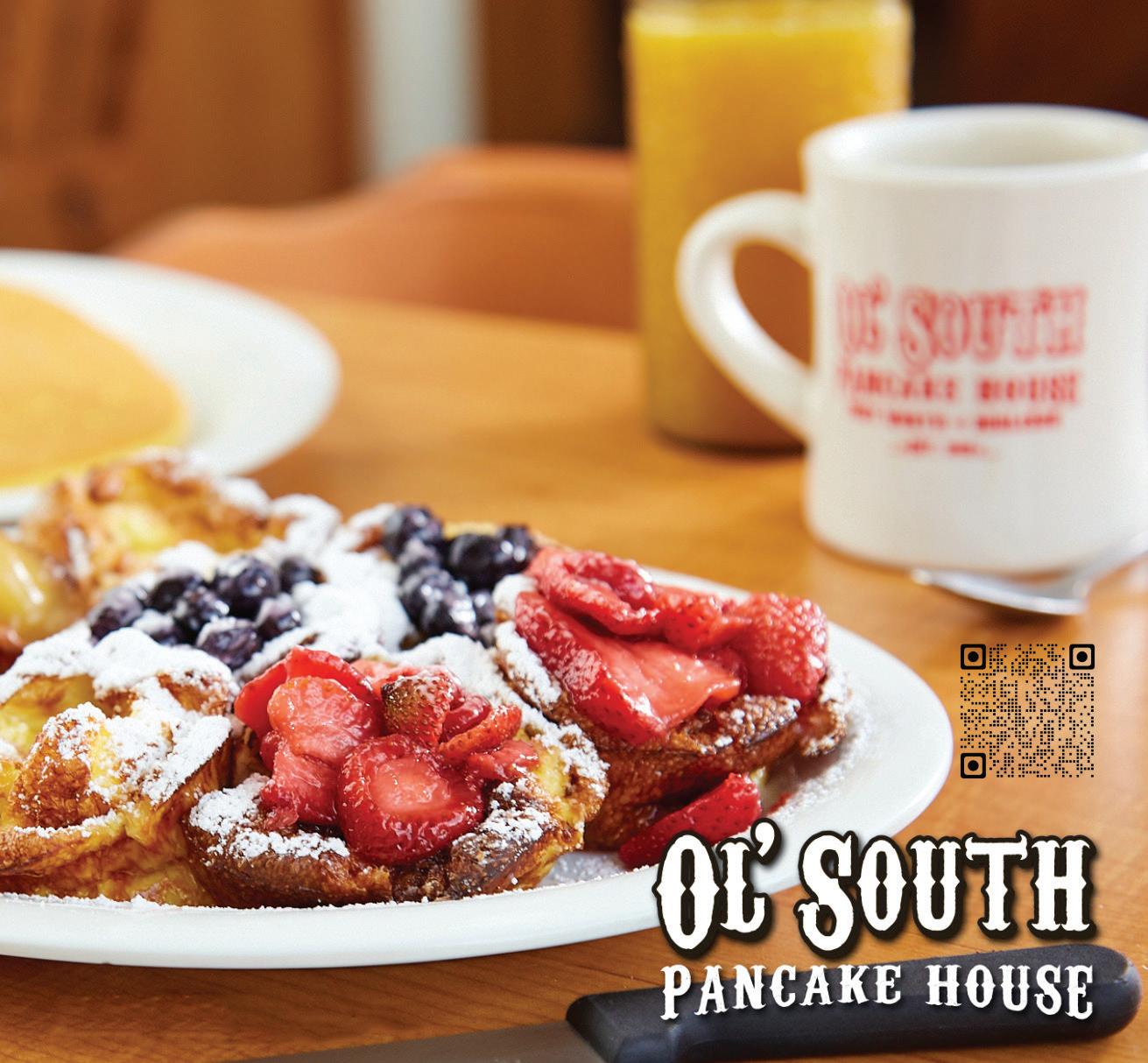





Our caring professionals are here to provide the support and structure kids and teens need to gain skills for a successful future.
Treatment options include:
• Crisis Behavioral Health Services for Grades K-12


• Substance Use and Detox Services for ages 12 - 17




• Outpatient Day Treatment Programs (in-person or virtual)




Voted Best Hospital & Voted one of the best Psychiatric Care Facilities

Call our intake number at 817-261-3121 or scan the code to learn more:







Scan here to watch our video:




Culinary Crossover
Newly opened Shōgun Taqueria on Magnolia Avenue isn’t your normal everyday taqueria. Rather, it’s a Mexican-Japanese fusion restaurant that serves dishes such as Mexicanspiced ramen, kimchi quesadillas and chicken tinga
WHAT WE’RE CHEWING OVER THIS MONTH: On page 82 p their cool now that their red-hot barbecue joint landed on a coveted, career-changing list. On page 88: DFW Restaurant Week is upon us once again.
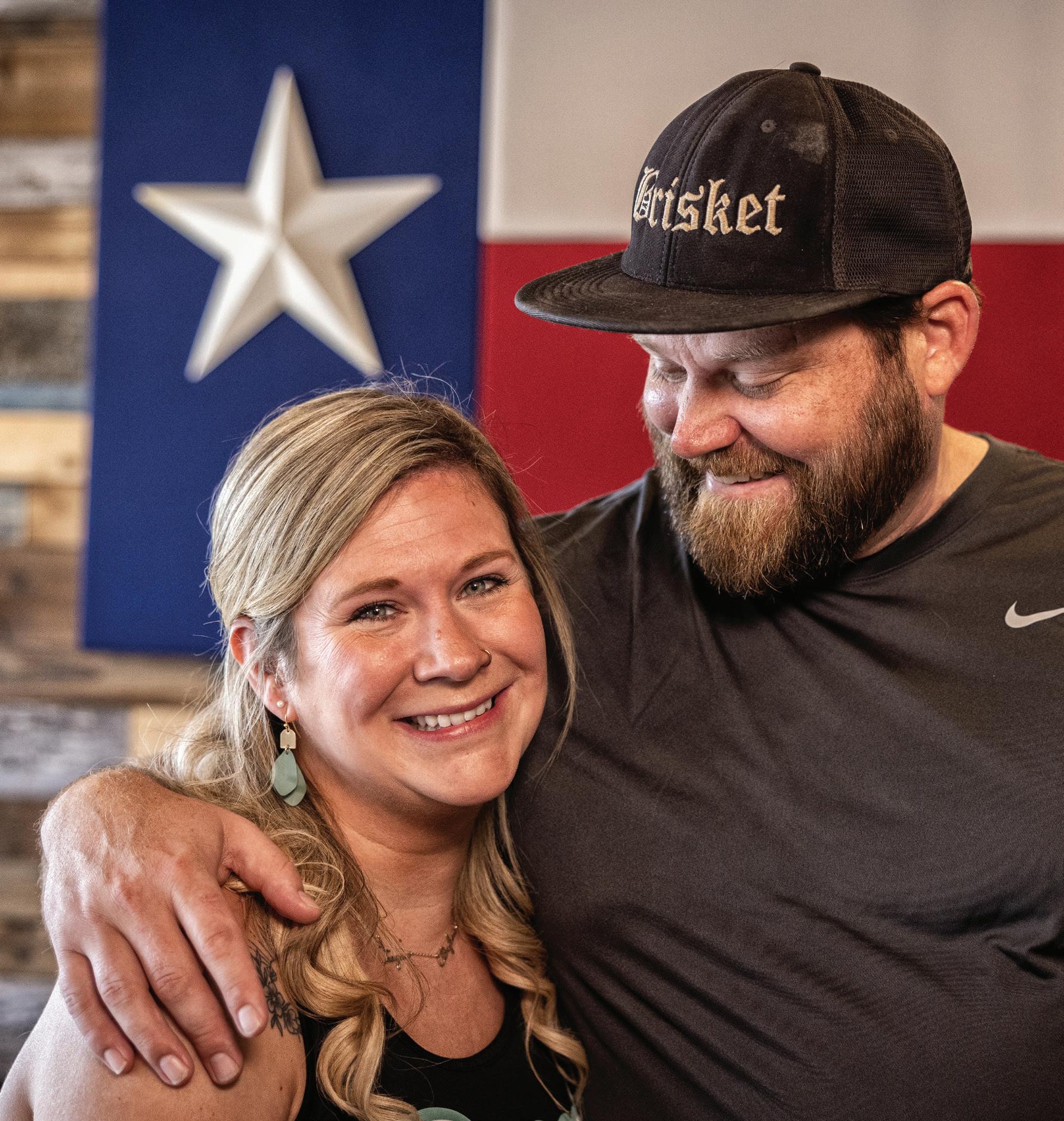
by Malcolm Mayhew
Photos by Darrell Byers
The husband-wife owners of Dayne’s Craft Barbecue remain on Cloud 9 following ‘Texas Monthly’ proclaiming their restaurant the seventh best BBQ joint in the state.
There’s a notion that exists in Texas barbecue circles that once your favorite ‘cue joint makes TexasMonthly’sTop BBQ Joints list, there’s no way you’ll be able to eat there again, the crowds will be so huge. That’s definitely true for some
places. Goldee’s, for instance. Snow’s. The lines are still ungodly long at Franklin’s.
But in the case of Dayne’s Craft Barbecue — the Aledo-based ‘cue joint that not only landed on the recently
released 2025 edition of Texas Monthly’s celebrated ‘cue list but at No. 7 — that notion is a little out of whack.
“A hundred percent you can still eat here,” co-owner Ashley Weaver chuckles. “We do call Wednesdays, Thursdays, and Fridays our ‘local days’ because that’s when locals know they don’t have to fight the crowds. But even on the weekends, when the line goes around the building, the wait time isn’t that bad — maybe 45 minutes to an hour to go through the line, and 15 minutes to get your food. Honestly, it’s not any more of a wait than a busy night at Red Lobster.”
Dayne’s namesake pitmaster Dayne Weaver says that many of the state’s lauded ‘cue joints are only open a certain number of hours on a certain number of days, which leads to crushes of people. Snow’s and Goldee’s are both weekend-only operations, and they close in the afternoon.
Dayne’s, on the other hand, operates much more like a traditional restaurant: Open five days a week, all day, and on Fridays and Saturdays, they’re open until 8 p.m. — a rarity in the craft ‘cue world.
“That’s actually a good hack,” Dayne says. “Come on a Friday or Saturday night. A lot of people don’t know we’re open then, mainly because, traditionally, a lot of barbecue restaurants aren’t open late. They’re usually just open a few hours a day for lunch.”
The restaurant also employs a large staff of about 35, including eight or nine pitmasters. That many hands-ondeck means less wait times, the couple says.
“Even before we made the list, we were thinking about ways to keep our wait times down, and hiring a good size staff was one of them,” Dayne says. “We’ve been terrified of people having to wait in long lines, so we did our best to prepare ourselves and prepare our staff in case we did make the list.”
Their foresight was key. “We have a Plan A, a Plan B, a Plan C, D and E,” Ashley says. “Dayne’s a meticulous planner. I’m more of a go-with-the-








FUTURE-FOCUSED. STUDENT-CENTERED.
Known as a dynamic leader and dedicated educator, Chancellor Pullin honors TCU’s traditions while charting a path that keeps students at the center of growth, innovation, impact, research, excellence and forward momentum.
With a clear vision and strong commitment to student, faculty, staff and alumni success, Chancellor Pullin is ready to Lead On into an exciting era for the Horned Frog community.
TCU.EDU








flow type of person. But we knew we’d better have some plans in place, and I’m glad we did. We were already focusing on service before the list dropped, so we weren’t caught with our pants down.”
The Dayne’s of today, housed in a cool, old historic building, next to a set of railroad tracks, in a high-traffic area near downtown Aledo, is a far cry from the pitmaster’s humble beginnings, which started in his backyard in White Settlement. That’s where Dayne started serving barbecue to friends, family, and neighbors.
Dayne honed his skills by reading barbecue books and watching barbecue videos, soaking in as much information as he could. He then took that knowledge and through trial and error came up with his own distinct style of ‘cue. “He was perfecting brisket before he knew there was a top 50 anything for it,” Ashley says. “He just started educating himself on temperatures and different cooking methods and created his own thing.”
That self-taught approach sets Dayne apart from a lot of other celebrated Texas barbecue joints.
“If you look at the top 10 and then really on most of the top 50, but definitely the top 10, every establishment has somebody who has worked for another barbecue business,” she says. “Like they either worked somewhere and decided to venture out to open up their own place, or they apprenticed under another top 10 place. Dayne didn’t learn from anybody else. He learned from self-experience, and then he taught me, and then he taught our pitmasters. And now we’re continuing to share that knowledge with our employees. It’s a very do-it-ourselves way of operating a restaurant.”
That’s the way they like it. Over the years, as their business has grown from doing pop-ups to running a food trailer to landing a brick-and-mortar, they’ve had ample opportunities to work outside their circles, to bring in investors and partners who could definitely stretch their careers and brand. But oftentimes, the Weavers know,

those relationships come at a cost.
“We worry about compromising the quality of our food,” says Ashley. “Anytime you have a partner involved financially, they’re gonna wanna do whatever they can to affect the cost. And they might not understand why we’re paying a premium for better meat or better-quality ingredients than another barbecue place. It’s nice we don’t have to run those decisions by someone else, decisions that may impact our business.”
Ashley, who was born in Arlington, and Dayne, a military brat who has lived all over the world, met in 2012 at a car dealership, where they were both working. “I was a receptionist, and he was a salesman,” she says. “The reason that I liked him is because he was the worst salesman I’ve ever met in my life. To this day, he cannot tell a lie. I don’t even know if he ever made a commission. I was like, ‘Wow, he’s got some integrity. Let’s see where this goes.’”
Thirteen years, four kids, and one very successful barbecue business later, the two earned a spot on a coveted list that will no doubt, in ways big and small, change the course of their lives.
“We’re still in shock,” Ashley says.

“There were subtle little hints that were dropped by Texas Monthly that maybe we’d be on the list. They came and took photos. But they wouldn’t tell us anything for sure. So, when we heard, there was definitely a feeling of “How can it be us? It’s an amazing accomplishment. I think we deserve it. We’ve put in a lot of blood, sweat and tears, and I know a lot of other places have, but it just rings different for us because it has been just Dayne and I, without any investors or partners. It’s hard to make that work, and we’re not just making it work, we’re killing it, and that’s just an amazing feeling.”






by Malcolm Mayhew
Photos by Richard Rodriguez

In Fort Worth at least, the word “taqueria” implies certain things — namely, tacos, and namely, tacos made with traditional fillings, from beef and chicken to tripe and carnitas.
It doesn’t, in other words, typically refer to kimchi quesadillas, carne asada bao buns, or mole ramen.
But that’s what you’ll find at Shōgun Taqueria, a wonderfully unusual new spot in the Near Southside area that combines Mexican food with Japanese cuisine.
Opened this past spring, the concept comes from Francisco “Paco” Islas, who closed his previous restaurant, Paco’s Mexican Cuisine, to make way for Shōgun, which occupies the same Magnolia Avenue spot as Paco’s.
For eight years, Paco’s served traditional Mexican dishes like birria
tacos and molcajete. Impatient with an unpredictable economy that saw his following fluctuate and anxious to try something new, Islas closed Paco’s and, after a two-month break, embarked on a forward-thinking journey that may very well mark a first in Fort Worth’s dining scene.
“I knew I wanted to try something new, something that hadn’t been done before,” Islas says. “I love Japanese food, and I love Mexican food. I just needed to find a way to bring them together.”
For inspiration, Islas drew upon a collaborative Fort Worth Food + Wine Fest dinner he hosted with fellow Fort Worth chef Kevin Martinez, the executive chef at Tokyo Cafe. The two delivered a dinner that fused together elements of their areas of expertise.
“That was an amazing experience,” Islas says. “I really hadn’t done anything like that before, collaborate with another chef like that. The idea for Shōgun started there, and it’s been with me ever since.”
Shōgun Taqueria’s menu offers a truly integrated fusion experience: Quesadillas generously stuffed with kimchi and Oaxaca cheese; savory Asian dumplings brimming with chicken, chipotle peppers, and ginger seasoning; and tonkatsu con mole, a crispy deep-fried pork cutlet draped in a rich, housemade red mole sauce.
There are several vegetarian options, including shiitake mushroom tacos served on local corn tortillas and a Japanese-inspired take on pozole.
Drinks follow suit, with cocktails that artfully combine Mexican and Japanese elements, such as a sakura-infused margarita, a mezcal cocktail with bright yuzu citrus and Tajin, and a refreshing hibiscus sake sangria.
In a way, Shōgun carries a subtle echo of Islas’ family history. His father, also named Francisco, co-owned Paco & John’s on Eighth Avenue with renowned French chef Bernard Tronche of Saint-Emilion. From 2007 to 2014, Paco & John’s offered a blend of Mexican and French cuisine, including intriguing dishes like escargot tacos.
After Paco & John’s closed, Islas took over the business, relocating it to Magnolia Avenue in 2016 and rebranding it as Paco’s Mexican Cuisine. A second location of Paco’s opened in Sundance Square in the old Taco Diner space, but recently closed, allowing Islas to focus on Shōgun; at press time, he was in the process of opening an attached speakeasy bar.
For Islas, returning to Magnolia Avenue for this new chapter was a natural choice. “The Near Southside has been our home for many years, as both Paco’s and Paco and John’s,” he says.
“It’s been a part of my family. I thought if I’m going to open a new concept, I should do it here in an area my family and I know and love.”
ShogunTaqueria,1508W.MagnoliaAve., instagram.com/shoguntaqueria


»
»
»
»


Celebrating its 29th anniversary, DFW Restaurant Week is upon us. The annual dining event kicks off July 31-August 3 with a preview weekend, followed by the main course that runs through August 31. This year, 37 Tarrant County restaurants are participating, offering multicourse prix fixe menus at a discount rate for a good cause: Twenty percent of the cost of each meal goes to Lena Pope, the Fort Worth-based nonprofit dedicated to supporting children and families through education, counseling, and behavioral health services. Since 1998, Restaurant Week has raised more than $3 mil for Lena Pope. This year’s participating restaurants include Wicked Butcher, Ellerbe Fine Foods, Don Artemio, Rise, Bonnell’s Fine Texas Cuisine, newly opened Duchess, Toro Toro, Tinie’s Mexican Cuisine, Quince, Terra Mediterranean and Plank Seafood Provisions. Prices range from $49 to $59 for dinner and $29 for lunch or brunch.
Reservations are recommended. lenapope.org/ dfwrestaurantweek
The old Fireside Pies location in West 7th will soon have a new and similar tenant: Partenope Ristorante, an upscale pizza place specializing in Neapolitan pizza. The restaurant comes from couple Dino and Megan Santonicola, who’ve opened two other Partenope locations — one in downtown Dallas, the other in Richardson. Dino is well-known in pizza circles near and far: The native of Italy helped found the local Cane Rosso pizza chain and, according to CultureMap, Partenope has received Vera Pizza Napoletana (VPN) certification, meaning it meets the standard of true Naples-style pizza. Look for it later this year. 2949CrockettSt.,partenopedallas. com
Fort Worth’s Old Neighborhood Grill, which last month I reported was going to close, received a stay of execution. The mom and pop diner, opened in 1998, has been taken over by restaurateur Mazen Haddad, who also owns the similar Moe’s Cafes and Ginger Brown’s in
Lake Worth. Haddad has been a frequent guest throughout these pages. The Grill is in good hands. According to a Facebook post, Haddad is hoping to reopen the restaurant by the end of July/early August. 1633ParkPlace.
Blue Flag Distillery is set to open this fall in the old Rahr & Sons Brewing Co. digs on the South Side. According to a release, Blue Flag will be the first North Texas distillery to focus on American single malt whiskey. The expansive 37,000-square-foot facility will not only house distillery and brewing operations but also feature a private tasting room, retail space, and a special events area, according to a press release. The company says its new location will be home to two of the largest pot stills in the nation. While their American single malt whiskey is anticipated to age for three years, Blue Flag will also be producing artisanal gin and beer on-site. 701 GalvestonAve.
































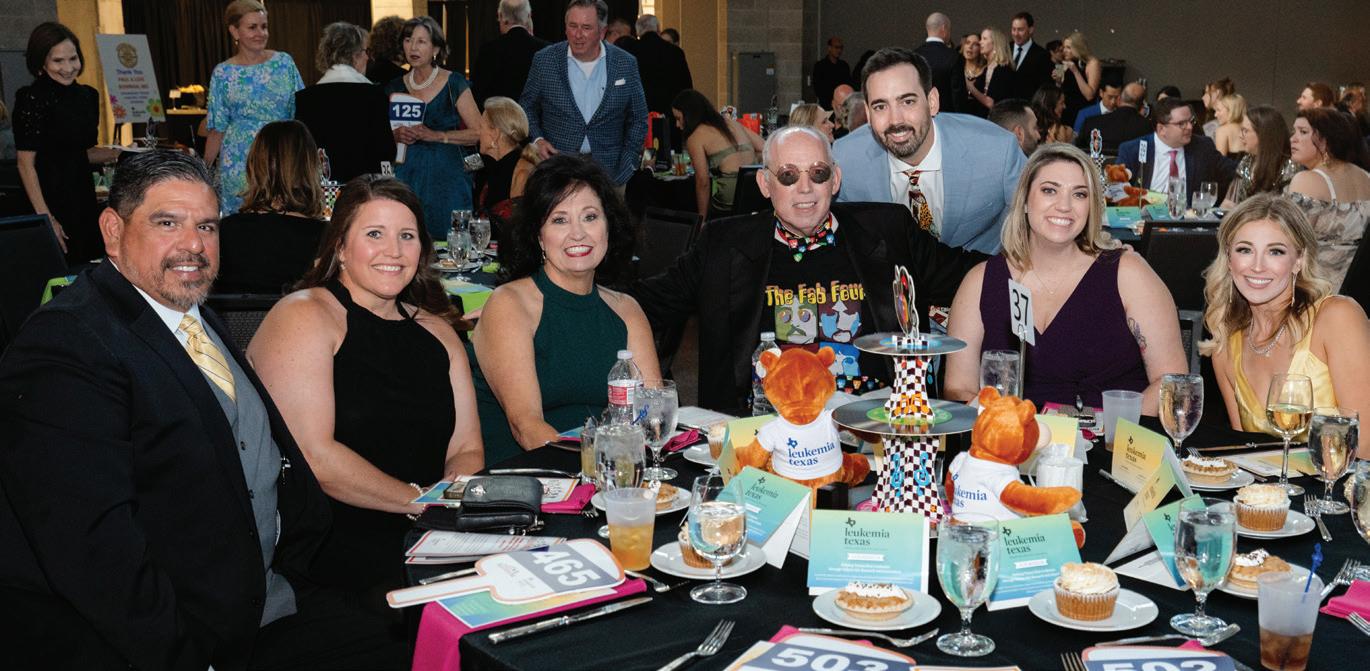
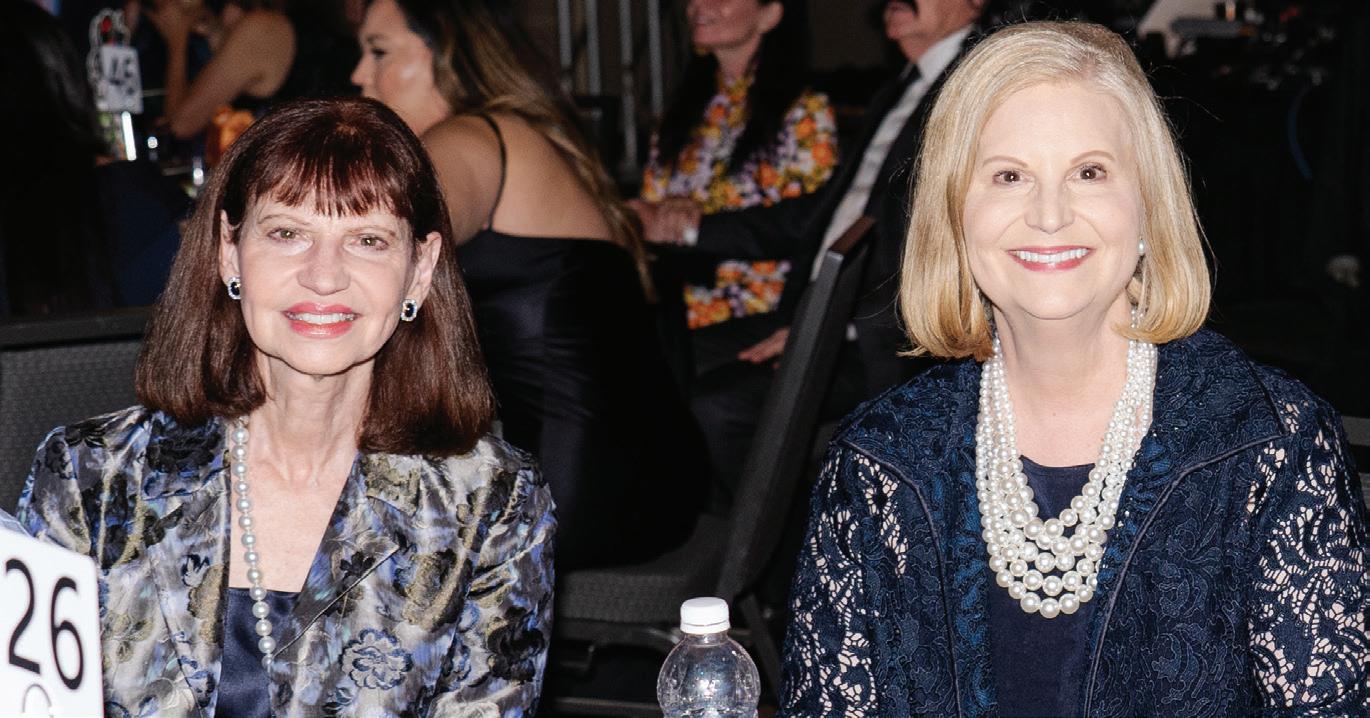





The 20th annual BEATLEukemia Ball brought together hundreds of supporters for an inspiring evening benefiting Leukemia Texas and its mission to fund research and
provide direct support to leukemia patients across the state. Held at the Simmons Bank Pavilion, the event featured a captivating performance by The Fab Four and a moving tribute to the lives touched by this disease. Fort Worth Magazine was proud to support this meaningful celebration of hope, progress, and community.












“The most unique party in Fort Worth!”


Supporting the Fort Worth Museum of Science and History's educational mission.



ANNA AND BENSON VARGHESE | EVENT CHAIRS
TABLE SPONSORS
Nissa and Ryan Harrington | Kelly Hart | Varghese Summersett | Bennett Partners | Frost | Melinda and Steve Winn

Amarillo National Bank | Andrews Institute at TCU | Byrne Construction Services | Hansen Family Foundation | Summersett Family Luther King Capital Management | Tammy and Ty McKinney | The Robinson Petronis Group of Baird Wealth Management
Madolin and Ben Rosenthal | Schmidgall Dental Aesthetics | JPMorganChase | Sproles Woodard LLP | TTI, Inc. | Uinta Wax | Valor
Media Sponsor


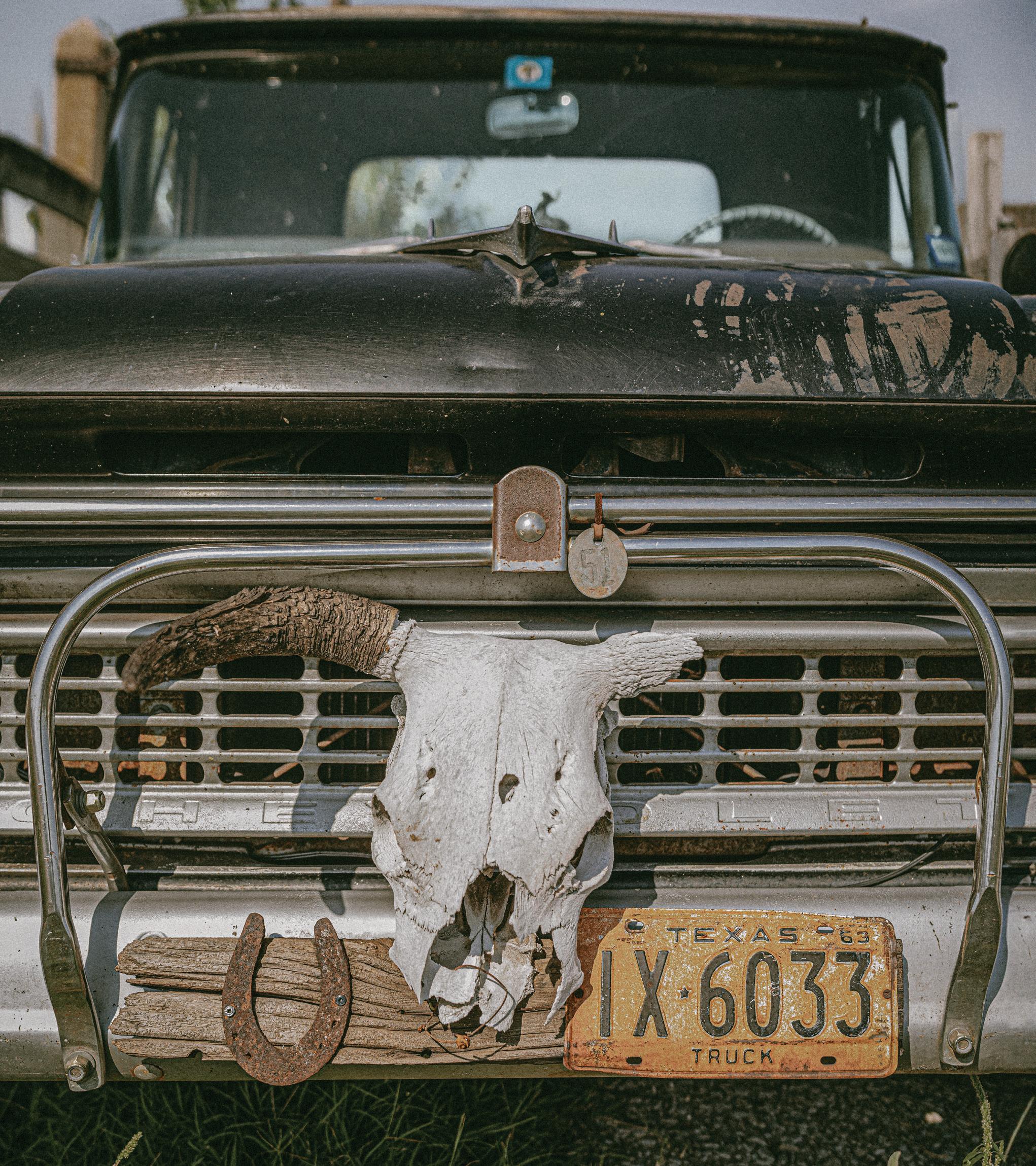
A photo from Anywhere, Texas. The sight of a work-worn, decades-old truck — in this case a circa 1964 Chevy — with skull ornamentation to boot is far from a rare sight in the Lone Star State. Afterall, the BBQ capital has long held the No. 1 spot for sales volume of pickup trucks and, according to Work Truck Online, over 20% of all vehicles on Texas roads are pickup trucks. Yet, Texans’ pickup manufacturer of choice happens to be Ford. According to TexasStandard,the ol’ Republic accounts for one out of every five Ford trucks sold and over 40% of the extravagant King Ranch models. Despite bearing the name of a South Texas ranch, we’ll have you know Ford manufactures these trucks in Michigan and Missouri. The one car company that manufactures trucks in Texas, thus branding them “Texas-Made”: Toyota.









The Gilchrist Valet Service:
• Online or over-the-phone sales purchase and delivery
• Service pick-up and delivery
Experience the Gilchrist Difference:
• Family owned and operated
• Purchase process tailored to your needs
• Three stores to choose from where each General Manager personally assists you
• Customer relationships do not end with the sale
• Each experience is special when you work with Gilchrist Automotive

















